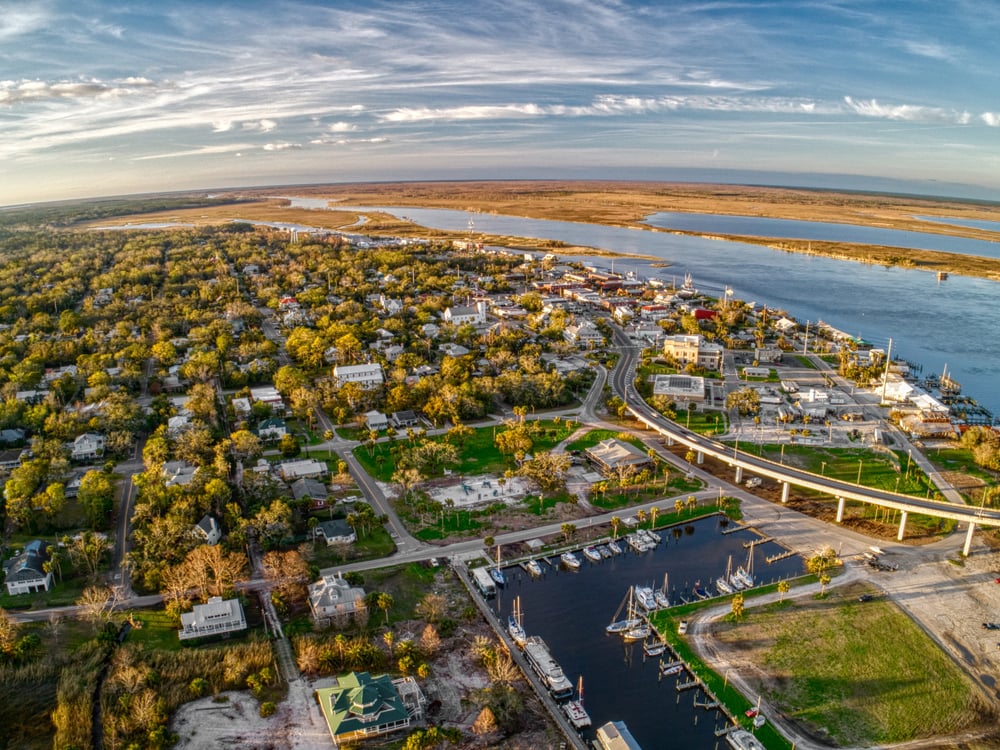
Best counties to live in Illinois
More counties in the United States experienced population growth in the last year, according to the latest Census data, even as pandemic-related moving trends begin to normalize.
Counties in the South continued to experience growth, particularly in Florida, where 96% of its 67 counties gained new residents. Polk County, Florida, a suburb of Orlando, added the most, with 26,000 people moving there in 2023.
Meanwhile, counties in the Midwest and Northeast continued to lose population, but at slower rates than the year before. Some of the biggest losses were in counties home to large cities, including Cook County, Illinois (home of Chicago) and the boroughs of Brooklyn and Queens in New York.
Many counties are experiencing growth due to their job opportunities, education, or relatively affordable housing costs. Others are favored for their historic or well-designed downtowns or access to cultural opportunities.
Stacker compiled a list of the best counties to live in Illinois using rankings from Niche. Niche ranks counties by various factors including public schools, educational attainment, cost of living, and housing.
Keep reading to see if your county made the list.
You may also like: Counties with the highest rates of high blood pressure in Illinois
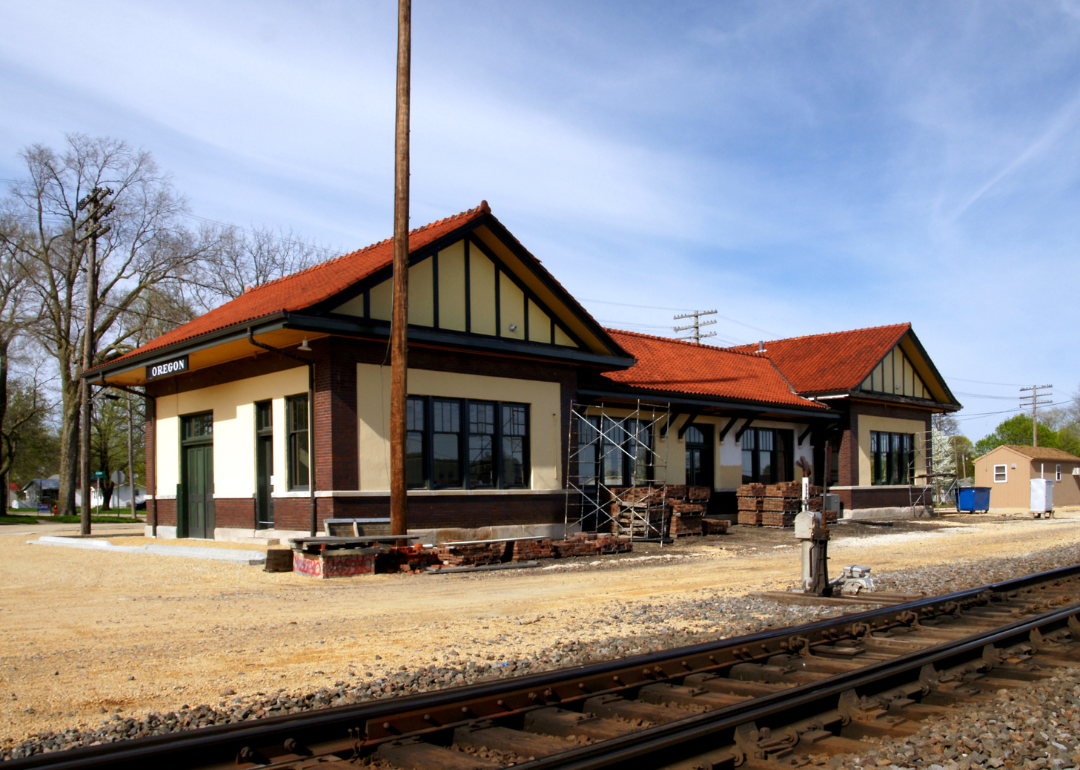
#30. Ogle County, Illinois
– Overall Rank: 932
– Population: 51,672
– Median household income: $75,782
– Median home value: $172,900 (73% own)
– Median rent: $841 (27% rent)
– Top public schools: Mary Morgan Elementary School (grade A), Byron Middle School (grade A), Eswood Community Consolidated Grade School (grade A)
– Top private schools: Faith Christian School (grade B), St. Paul Lutheran School (grade unavailable)
– Top places: Byron (grade A), Stillman Valley (grade A minus), Oregon (grade B+)

About
Ogle County sits in northwestern Illinois, where small-town life meets natural beauty along the Rock River. Spanning over 760 square miles, it combines fertile farmland with forested parks and historic towns like Oregon, Rochelle, and Byron.
The economy is anchored by agriculture, manufacturing, and energy production, providing a stable base for local employment. Residents value its affordable cost of living, access to quality schools, and abundance of outdoor recreation from hiking at Lowden State Park to fishing along the river.
Community events, historic landmarks, and a slower pace of life draw those seeking space and connection. With its blend of economic stability, scenic landscapes, and welcoming towns, Ogle County offers a grounded, enduring place to call home.
Where is Ogle County, Illinois?
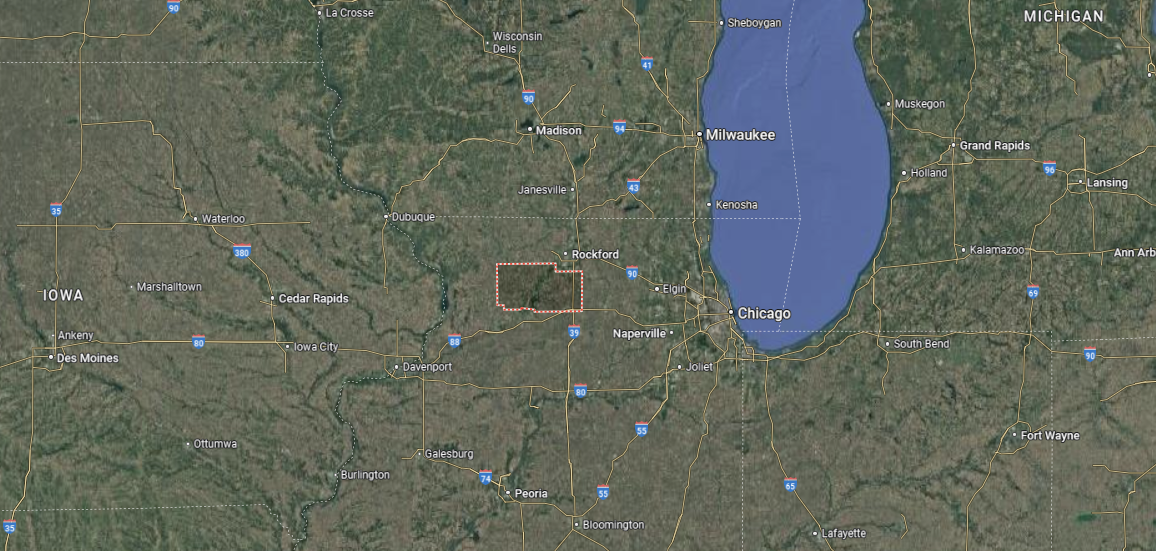
Ogle County is about 25 miles south of Rockford and roughly 100 miles west of Chicago, with access coming mainly from Interstate 88 or winding rural highways that pass through small towns and open fields.
The approach is unhurried, often taking you along two-lane roads bordered by cornfields and the slow curves of the Rock River. It’s close enough to reach in a morning drive, but far enough to feel like you’ve stepped into a quieter, older Illinois.
#29. Brown County, Illinois
– Overall Rank: 925
– Population: 6,334
– Median household income: $64,760
– Median home value: $122,100 (71% own)
– Median rent: $625 (29% rent)
– Top public schools: Brown County Elementary School (grade B), Brown County High School (grade B), Brown County Middle School (grade B minus)
– Top private schools: St. Mary Elementary School (grade unavailable)
– Top places: Mount Sterling (grade B), Mount Sterling Township (grade B+), Lee Township (grade B+)
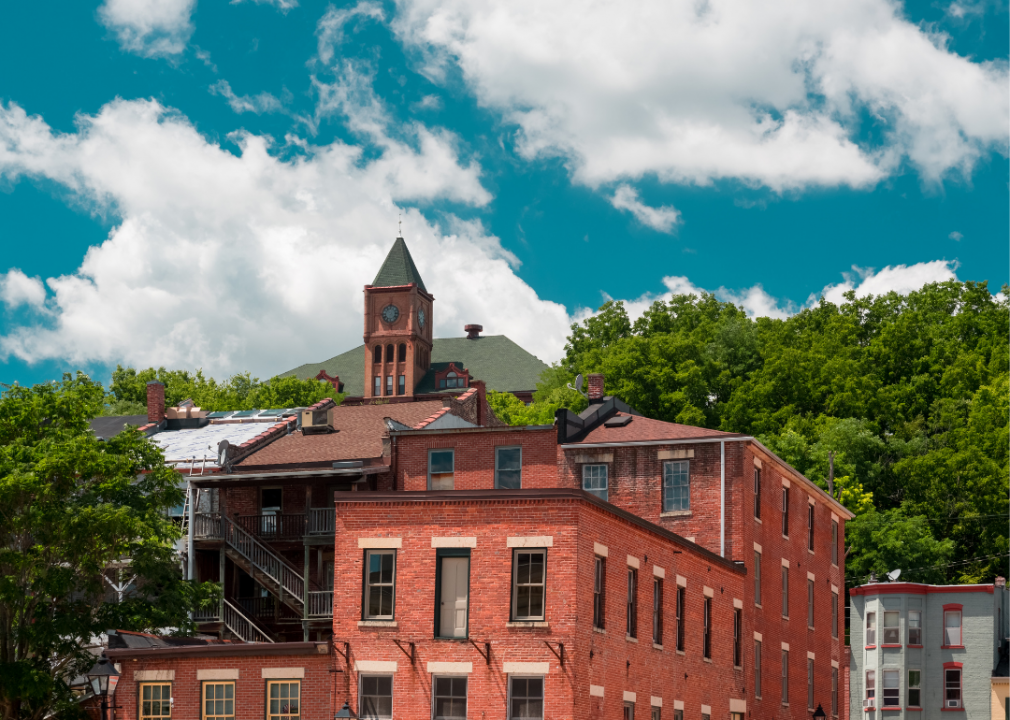
About
Tucked into west-central Illinois, Brown County is a place where quiet roads wind past fields and woodlands, and neighbors greet each other by name. With Mount Sterling as its county seat, it’s a community shaped by agriculture, small businesses, and local services that keep its economy steady.
Life moves at a pace that allows people to know their town and take pride in it. Residents are drawn by the low cost of living, safe neighborhoods, and a strong sense of belonging.
Families appreciate the close-knit schools, while outdoor enthusiasts explore nearby parks, rivers, and hunting grounds. For those seeking stability, space, and a strong connection to community roots, Brown County offers a way of life that endures across generations.
Where is Brown County, Illinois?
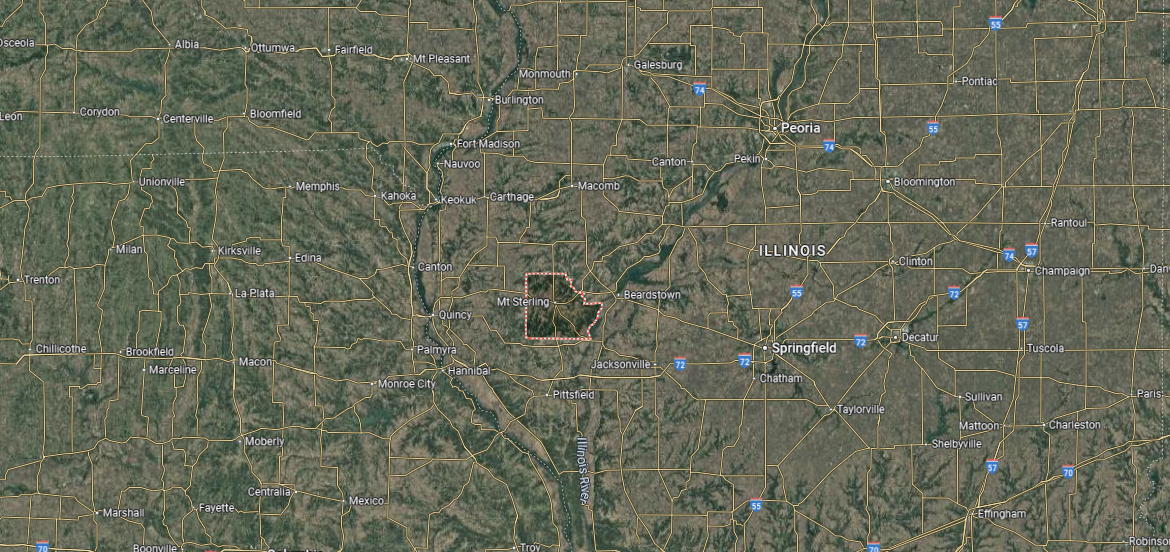
Brown County rests in the west-central part of Illinois, tucked between the Illinois River to the east and the Mississippi River to the west. It’s about 65 miles west of Springfield and can be reached by taking U.S. Route 24 or Illinois Route 99, which wind through farmland and small, historic towns.
The drive in moves at a gentle pace, with long stretches of open fields giving way to wooded hills near the river valleys. It’s a place where the roads seem to slow time, leaving you with the sense that the rest of the world is far away.
#28. Jo Daviess County, Illinois
– Overall Rank: 924
– Population: 21,942
– Median household income: $67,729
– Median home value: $179,300 (80% own)
– Median rent: $768 (20% rent)
– Top public schools: River Ridge Elementary School (grade A minus), Galena Middle School (grade A minus), Warren Elementary School (grade A minus)
– Top private schools: Tri-State Christian School (grade B+), St. Mary Elementary School (grade unavailable)
– Top places: Galena (grade A minus), East Dubuque (grade B+), The Galena Territory (grade A)

About
Jo Daviess County occupies Illinois’ far northwest corner, known for its rolling hills, Mississippi River views, and historic towns like Galena. Tourism drives much of the local economy, supported by hospitality, retail, and outdoor recreation industries, alongside agriculture.
Its geography and preserved architecture make it one of the state’s most distinctive rural regions. Residents enjoy a strong tourism market that supports local jobs, a relatively low cost of living, and year-round access to trails, waterways, and historic sites.
With vibrant small towns, a steady economic base, and scenic surroundings, Jo Daviess County appeals to those who want both opportunity and a high quality of life in a unique landscape.
Where is Jo Daviess County, Illinois?
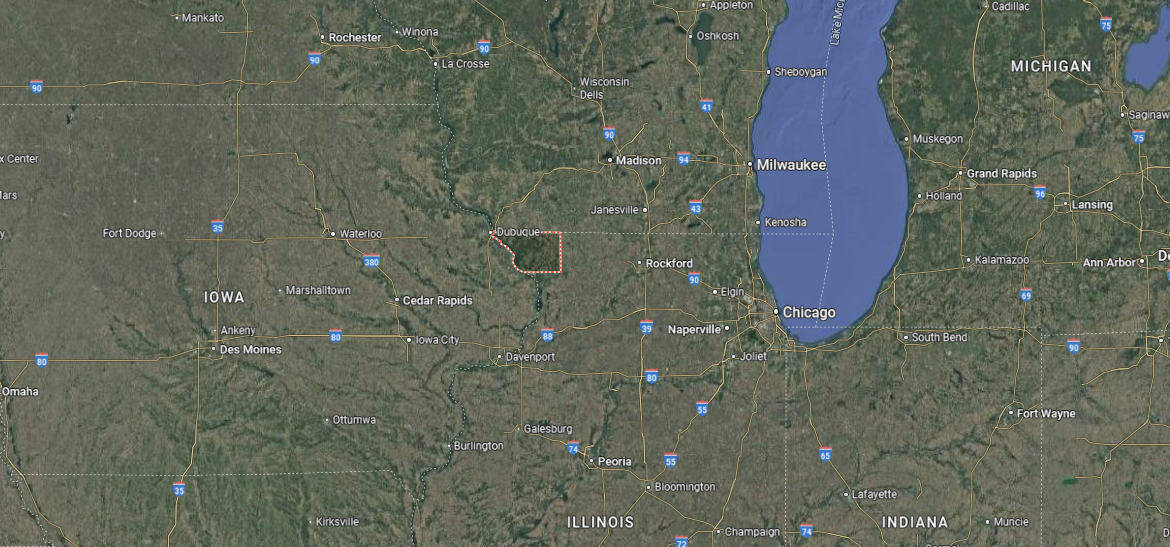
Jo Daviess County stretches across the far northwest corner of Illinois, where the flat prairies give way to steep bluffs, wooded valleys, and winding rivers. About 160 miles west of Chicago, it’s reached by roads that curve through limestone ridges, rolling hills, and historic towns that feel tucked into the folds of the Driftless Area.
Galena, the county seat, rests along the Galena River with 19th-century brick storefronts, historic homes, and streets that climb toward hilltop views. Smaller towns like Elizabeth, Stockton, and Hanover are gateways to parks, ski slopes, and scenic byways.
#27. Clinton County, Illinois
– Overall Rank: 904
– Population: 36,998
– Median household income: $78,054
– Median home value: $171,500 (80% own)
– Median rent: $888 (20% rent)
– Top public schools: Aviston Elementary School (grade A), Albers Elementary School (grade A), Germantown Elementary School (grade A)
– Top private schools: Christ Our Rock Lutheran High School (grade B), Mater Dei Catholic High School (grade B), All Saints Academy (grade unavailable)
– Top places: Germantown (grade A minus), Trenton (grade A minus), New Baden (grade A minus)

About
In Clinton County, life moves to the rhythm of its lakes, fields, and friendly main streets. Carlyle, the county seat, sits beside Illinois’ largest man-made lake, drawing anglers, boaters, and campers from across the region.
Agriculture remains a steady economic backbone, joined by manufacturing, retail, and a growing recreation-based economy tied to tourism. People choose to stay here for more than just the scenery. Affordable housing, strong community ties, and access to quality schools create a sense of stability.
Weekends are spent on the water, at local festivals, or in small-town cafés where everyone knows your name. In Clinton County, the combination of economic steadiness and a lifestyle built around both work and leisure makes it a place worth calling home.
Where is Clinton County, Illinois?
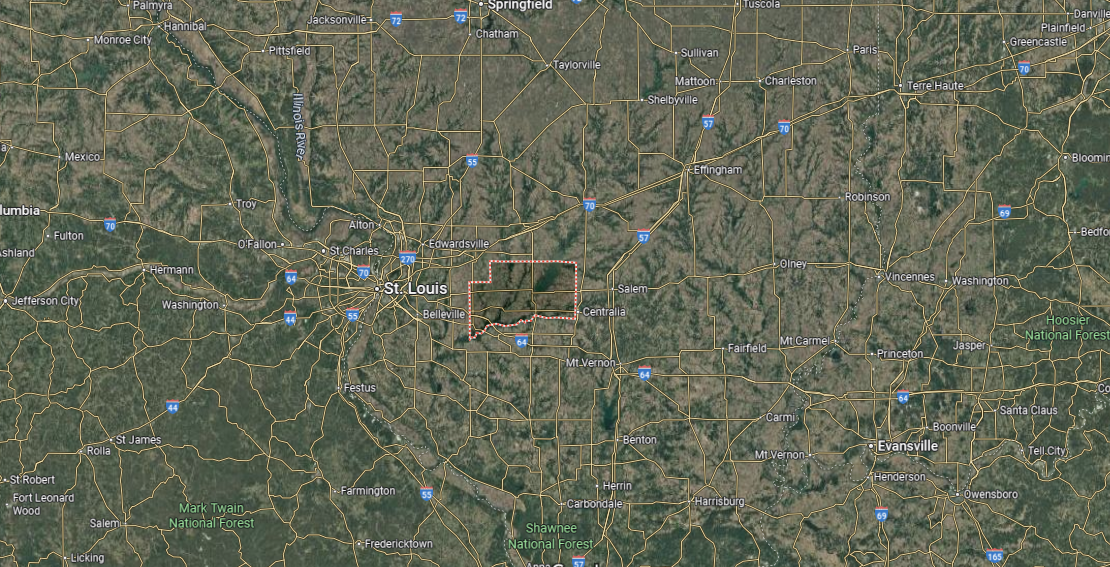
Clinton County sits in the southwestern part of Illinois, anchored by its wide stretches of farmland and the shimmering expanse of Carlyle Lake. It’s about 45 miles east of St. Louis, Missouri, and can be reached via Interstate 64 or Illinois Route 127, where the drive passes through gentle plains and small farming communities.
The approach opens up to long horizons, with the lake’s shoreline emerging like a quiet landmark in the middle of the prairie. It’s the kind of place where open water meets open land, and the stillness feels endless.
#26. Winnebago County, Illinois
– Overall Rank: 849
– Population: 284,591
– Median household income: $61,738
– Median home value: $146,800 (66% own)
– Median rent: $941 (34% rent)
– Top public schools: Prairie Hill Elementary School (grade A), Ledgewood Elementary School (grade A), Shirland School District #134 (grade A)
– Top private schools: Keith Country Day School (grade A+), Boylan Catholic High School (grade A minus), Rockford Christian Schools (grade A minus)
– Top places: Rockton (grade A), Roscoe (grade A minus), South Beloit (grade B+)
You may also like: How syringe exchanges in Illinois reduce the spread of disease
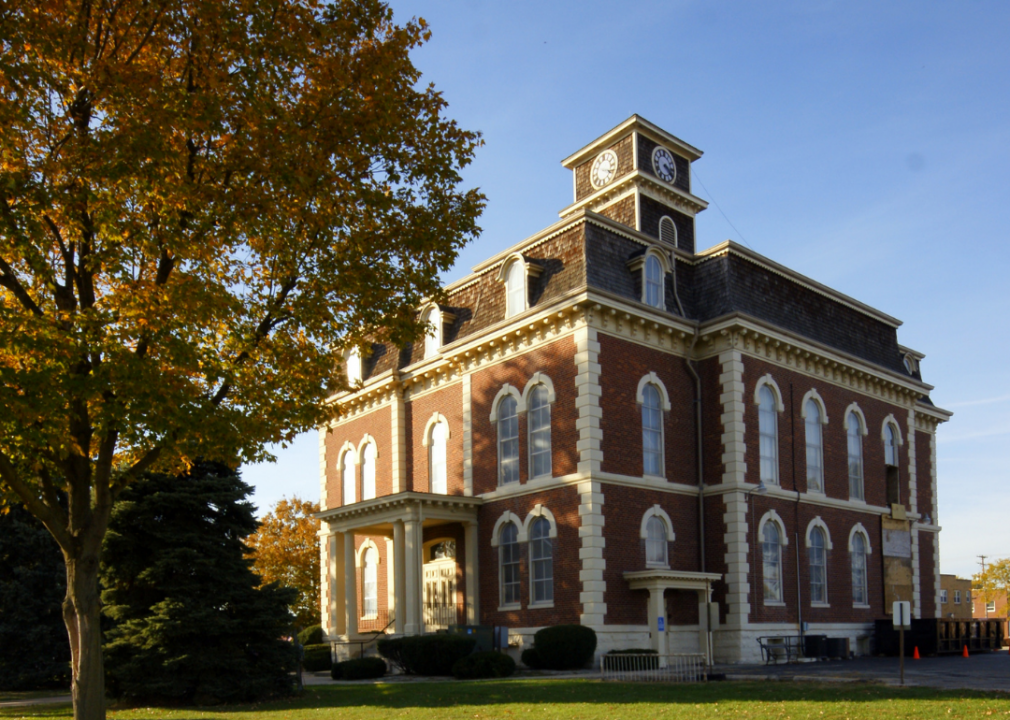
About
Winnebago County blends the energy of Rockford’s urban core with the charm of its surrounding towns and rural areas. Its economy is powered by healthcare, manufacturing, aerospace, and a strong logistics network, offering a range of job opportunities.
Affordable housing, quality schools, and access to higher education add to its appeal for both families and professionals. Residents enjoy a balance of culture and recreation, from museums and live music venues to riverfront parks and golf courses.
With excellent transportation links to Chicago, Madison, and Milwaukee, Winnebago County offers both connection and breathing room—a combination that keeps people rooted here.
Where is Winnebago County, Illinois?
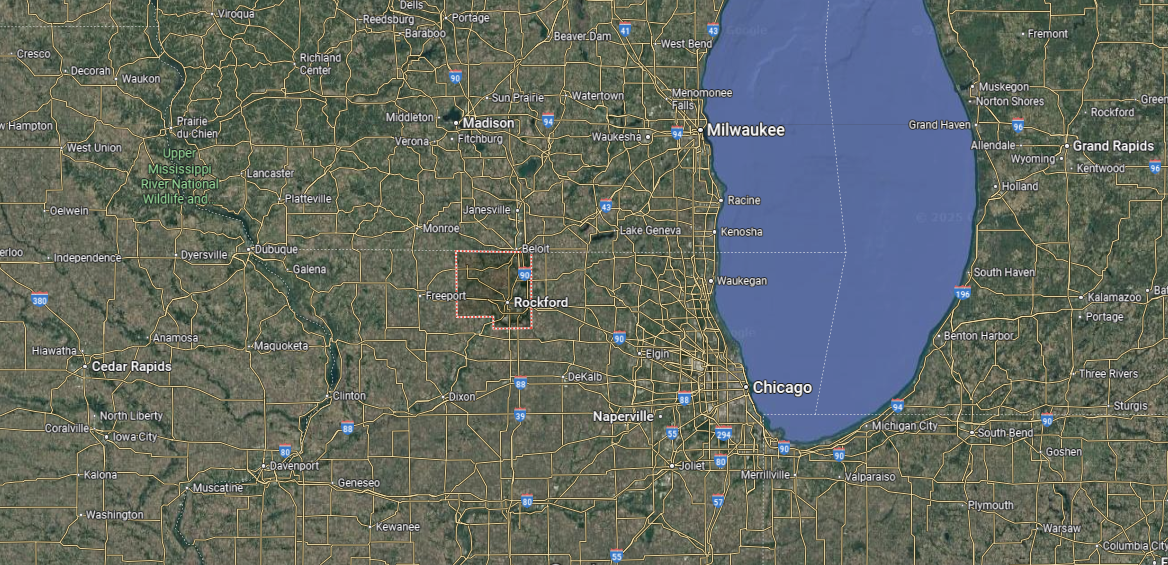
Winnebago County is in the far northern part of Illinois, bordering Wisconsin and centered around the Rock River. It’s about 90 miles northwest of Chicago and is most easily reached by Interstate 90, which leads into Rockford, the county’s largest city, before branching into smaller highways toward rural outskirts.
Traveling farther out takes you along quiet backroads framed by farmland, wooded groves, and the occasional river crossing. It’s close to major routes yet feels like a place where the edges soften into open country.
#25. Effingham County, Illinois
– Overall Rank: 833
– Population: 34,594
– Median household income: $73,181
– Median home value: $166,500 (78% own)
– Median rent: $697 (22% rent)
– Top public schools: Teutopolis Junior High School (grade A), Teutopolis Grade School (grade A), Teutopolis High School (grade A minus)
– Top private schools: St. Anthony High School (grade A minus), St. Anthony Elementary School (grade unavailable), Sacred Heart Elementary School (grade unavailable)
– Top places: Teutopolis (grade A minus), Effingham (grade B+), Teutopolis Township (grade A)
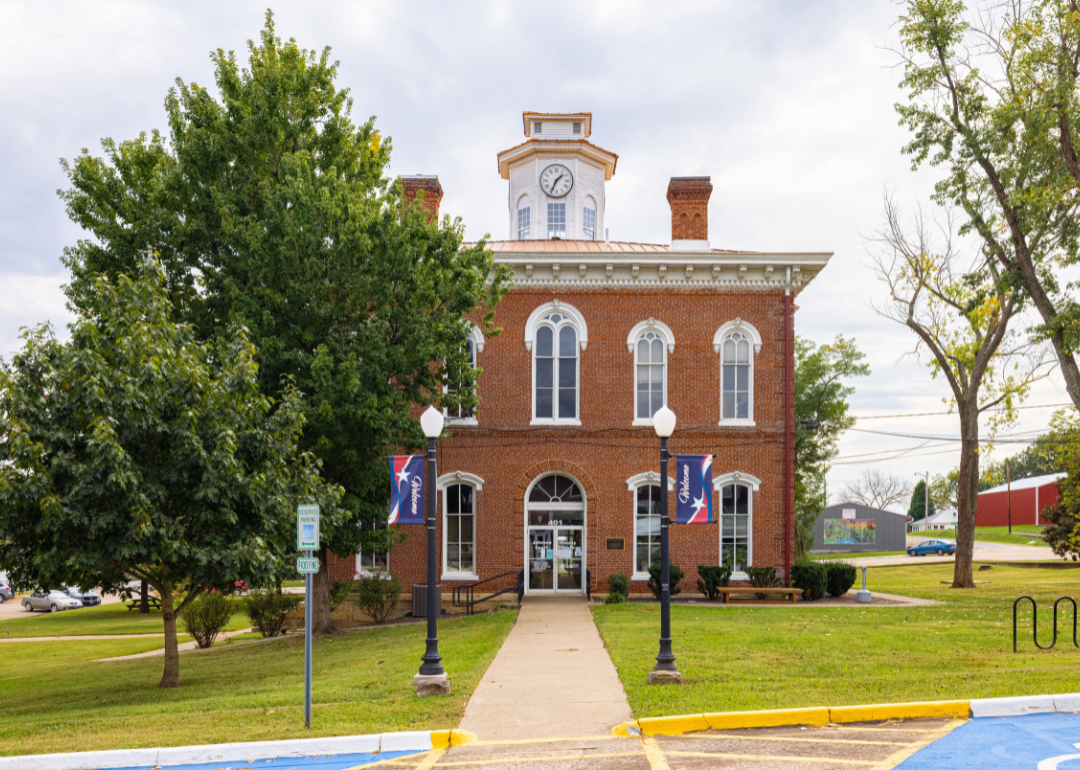
About
Effingham County greets travelers at the crossroads of Interstates 57 and 70, where small-town charm meets a steady flow of commerce. The city of Effingham anchors the county, its local businesses thriving alongside national retailers and a strong manufacturing base.
Agriculture still shapes much of the landscape, while hospitality and logistics keep the economy diverse and resilient. For residents, the appeal lies in its mix of opportunity and comfort.
Affordable homes, quality schools, and a calendar filled with community events make daily life feel connected. From quiet evenings in neighborhood parks to weekends exploring local shops and restaurants, Effingham County offers a pace of life that balances productivity with a sense of place.
Where is Effingham County, Illinois?
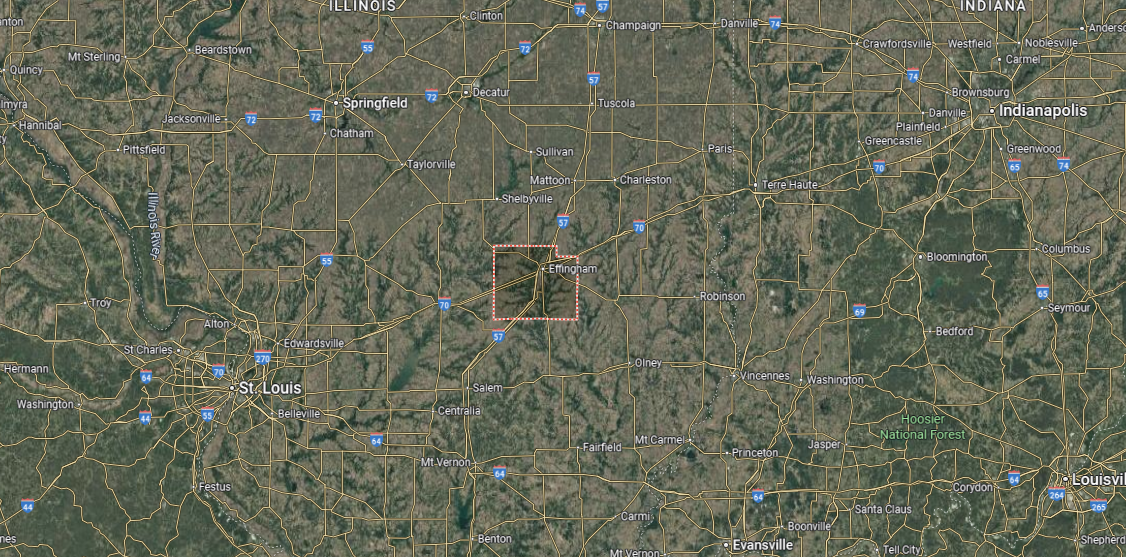
Effingham County lies in south-central Illinois, where interstates and farmland meet in a broad, open landscape. It’s about 100 miles east of St. Louis and reached by the crossroads of Interstates 57 and 70, with the drive carrying you past flat fields, grain silos, and small rural towns.
Roads here seem to stretch endlessly, broken only by the steady rhythm of farmsteads and church steeples. It’s a place where the journey feels simple and uncluttered, as if the wide horizon keeps the rest of the world at a distance.
#24. Johnson County, Illinois
– Overall Rank: 798
– Population: 13,313
– Median household income: $63,295
– Median home value: $141,200 (85% own)
– Median rent: $630 (15% rent)
– Top public schools: Vienna Grade School (grade A minus), Vienna High School (grade B), New Simpson Hill School (grade B)
– Top private schools:
– Top places: Vienna (grade B+), Buncombe (grade B minus), New Burnside (grade B minus)
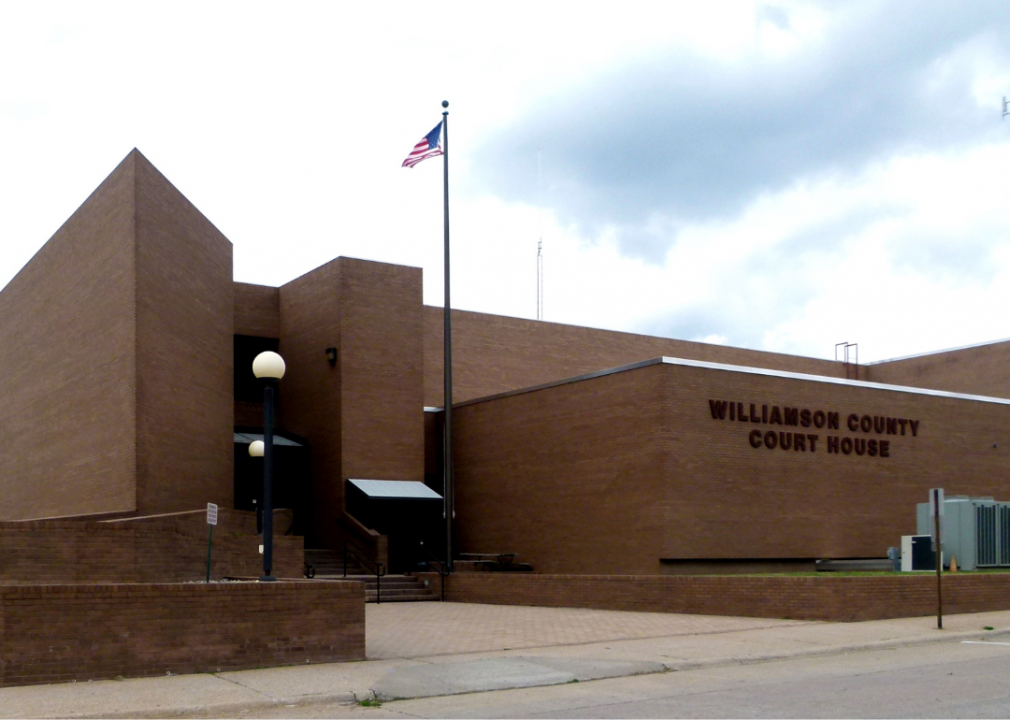
About
Johnson County sits in the southern tip of Illinois, surrounded by rolling hills, forests, and the rugged beauty of Shawnee National Forest. Vienna, the county seat, serves as the central hub for commerce, education, and local government.
The economy is rooted in agriculture, outdoor tourism, and small-scale manufacturing, offering a stable mix of employment opportunities. Residents value the county’s low cost of living, safe communities, and abundant outdoor recreation.
Hiking, fishing, camping, and horseback riding are part of everyday life, thanks to proximity to trails like the Tunnel Hill State Trail. For those seeking a slower pace without sacrificing access to essential services, Johnson County offers a lifestyle grounded in nature and community.
Where is Johnson County, Illinois?
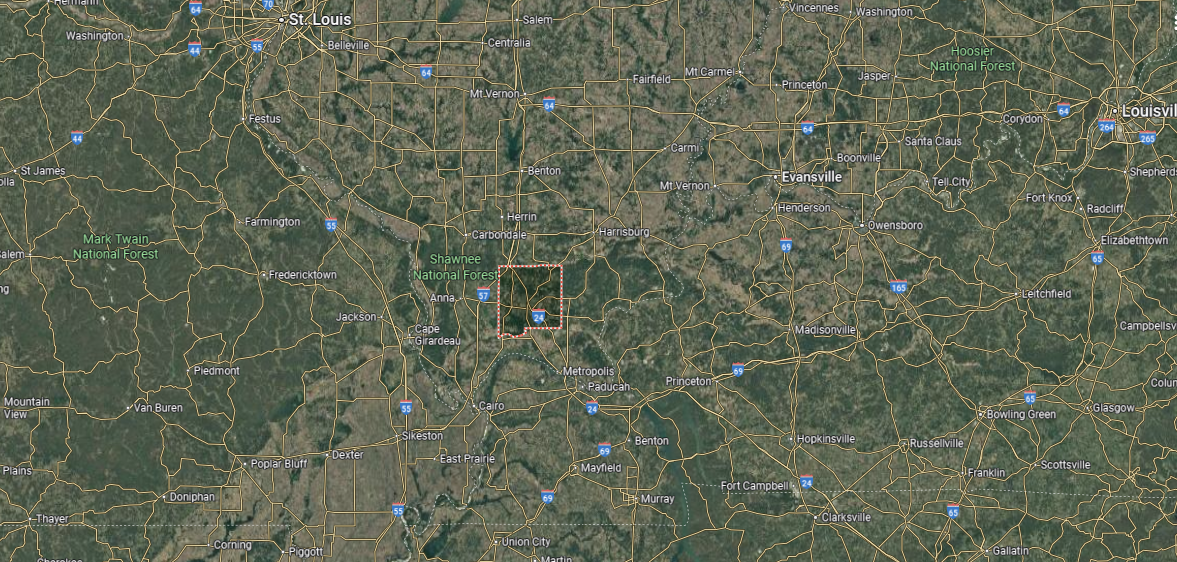
Johnson County is in the southern tip of Illinois, nestled within the rolling hills and hardwood forests of the Shawnee National Forest. It’s about 25 miles south of Marion and reached mainly by Interstate 57 or Illinois Route 146, which wind through wooded valleys and open ridgelines.
The approach often brings glimpses of rocky bluffs, quiet hollows, and stretches of farmland framed by dense green. It’s the kind of place where the road narrows, the air feels still, and nature seems to wrap around you completely.
#23. Williamson County, Illinois
– Overall Rank: 732
– Population: 67,120
– Median household income: $60,325
– Median home value: $139,500 (71% own)
– Median rent: $824 (29% rent)
– Top public schools: Carterville High School (grade A minus), Carterville Junior High School (grade A minus), Carterville Intermediate School (grade A minus)
– Top private schools: Our Lady of Mt. Carmel School (grade unavailable), Unity Christian School (grade unavailable)
– Top places: Carterville (grade A), Crainville (grade A), Energy (grade A minus)
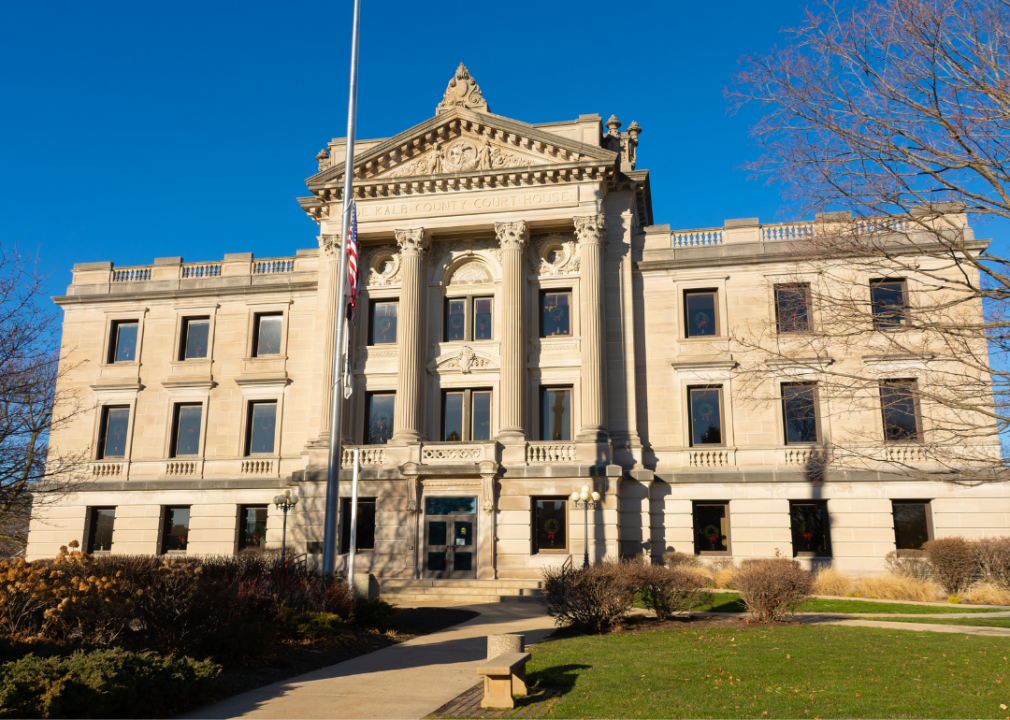
About
In Williamson County, mornings begin with sunlight spilling over lakes and farmland, and the hum of small businesses opening along courthouse squares. The county’s cities—Marion, Herrin, Carterville—each carry their own histories, yet share a common thread of resilience.
Coal mining once fueled its growth; today, healthcare, retail, manufacturing, and education form the backbone of a steady, diverse economy. People stay for the things that can’t be measured on paper: neighborhoods where families know one another, festivals that fill downtown streets, and the nearness of lakes and trails that offer escape at day’s end.
Affordable housing, a strong job market, and easy access to Southern Illinois University make Williamson County both practical and deeply personal—a place where roots run long.
Where is Williamson County, Illinois?
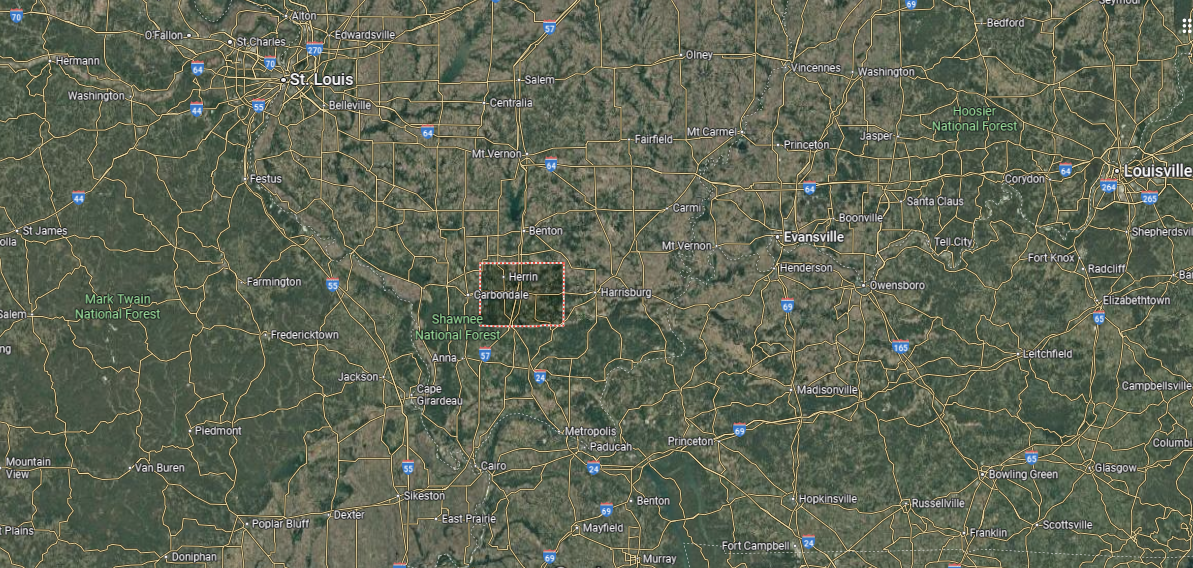
Williamson County sits in southern Illinois, at the heart of the region known as Little Egypt, where farmland meets lakes and forested hills. It’s about 60 miles southeast of St. Louis and reached by Interstate 57 or Illinois Route 13, which cut through small towns and open countryside.
The drive often reveals glimpses of Crab Orchard Lake and the wooded edges of the Shawnee National Forest. It’s close to the main highways, yet the scenery quickly shifts to a slower, more grounded rhythm.
#22. DeKalb County, Illinois
– Overall Rank: 723
– Population: 100,686
– Median household income: $68,617
– Median home value: $218,600 (60% own)
– Median rent: $1,024 (40% rent)
– Top public schools: Somonauk Middle School (grade A), Indian Creek Elementary School (grade A minus), W.W. Woodbury Elementary School (grade A minus)
– Top private schools: Aurora Christian Schools Cornerstone Campus (grade B minus), St. Mary’s Catholic School (grade unavailable), St. Mary School (grade unavailable)
– Top places: Sycamore (grade A), Somonauk (grade B+), DeKalb (grade B+)
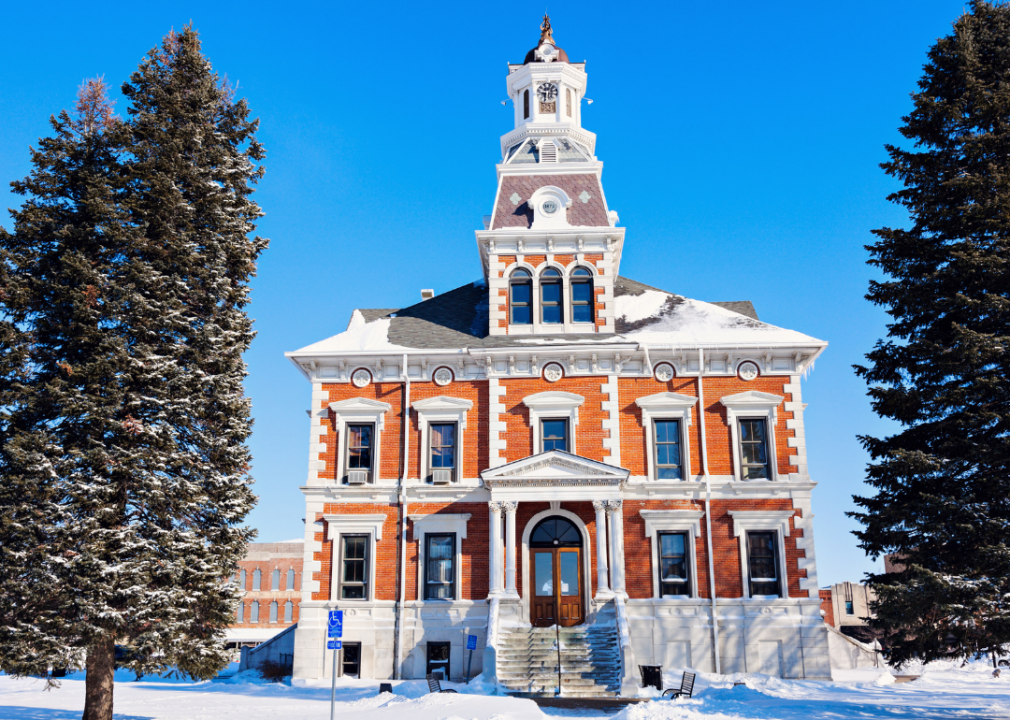
About
DeKalb County offers a unique mix of college-town vitality and Midwestern farmland calm. Northern Illinois University fuels the local economy alongside agriculture, manufacturing, and healthcare, creating a diverse range of job opportunities.
Towns like Sycamore and DeKalb pair historic charm with modern conveniences, giving residents plenty of options for shopping, dining, and community events. The county’s appeal lies in its affordability, access to higher education, and proximity to Chicago without the congestion.
Parks, forest preserves, and trails provide space to unwind, while year-round festivals keep the calendar full. It’s a place where academic energy and rural tradition live side by side, offering a balanced lifestyle for students, families, and professionals alike.
Where is DeKalb County, Illinois?
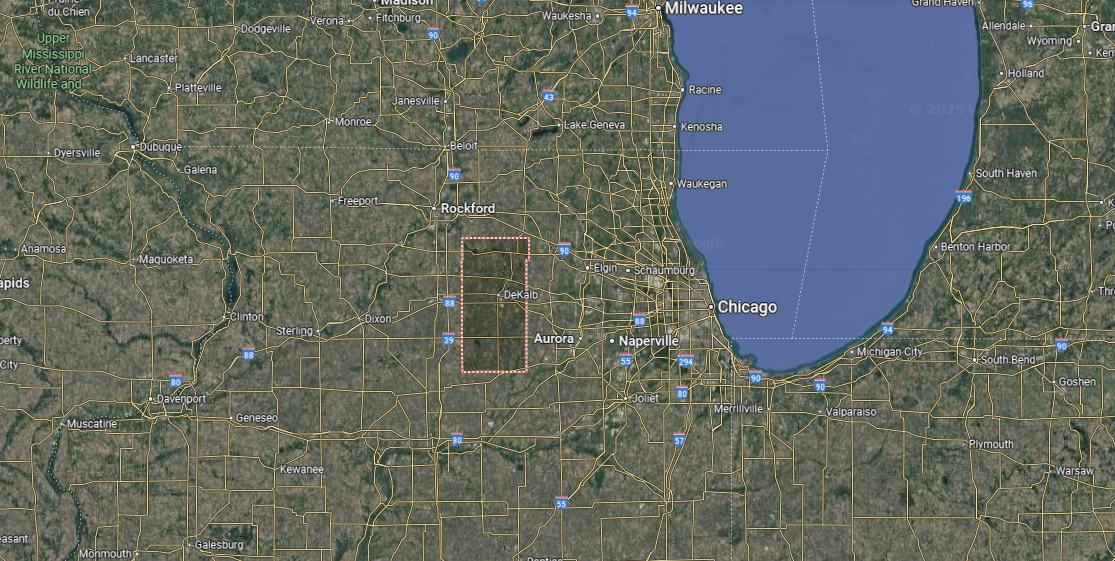
DeKalb County lies in the north-central part of Illinois, where fertile farmland stretches between the Fox River Valley and the Rock River region. It’s about 60 miles west of Chicago and reached mainly by Interstate 88 or U.S. Route 38, with the drive passing through wide fields and clusters of small Midwestern towns.
Approaching from any direction, the horizon feels open, dotted with barns, silos, and the occasional wind farm. It’s close enough to the city for a day’s reach, yet far enough that the pace feels entirely its own.
#21. McDonough County, Illinois
– Overall Rank: 717
– Population: 27,370
– Median household income: $48,904
– Median home value: $100,400 (61% own)
– Median rent: $688 (39% rent)
– Top public schools: West Prairie South Elementary School (grade A minus), Macomb Senior High School (grade B), Macomb Junior High School (grade B)
– Top private schools: St. Paul School (grade unavailable), TRINITY ACADEMY (grade unavailable), Calvary Baptist Christian Academy (grade unavailable)
– Top places: Macomb (grade B+), Bushnell (grade C+), Emmet Township (grade A)
You may also like: Best lookout points in Illinois
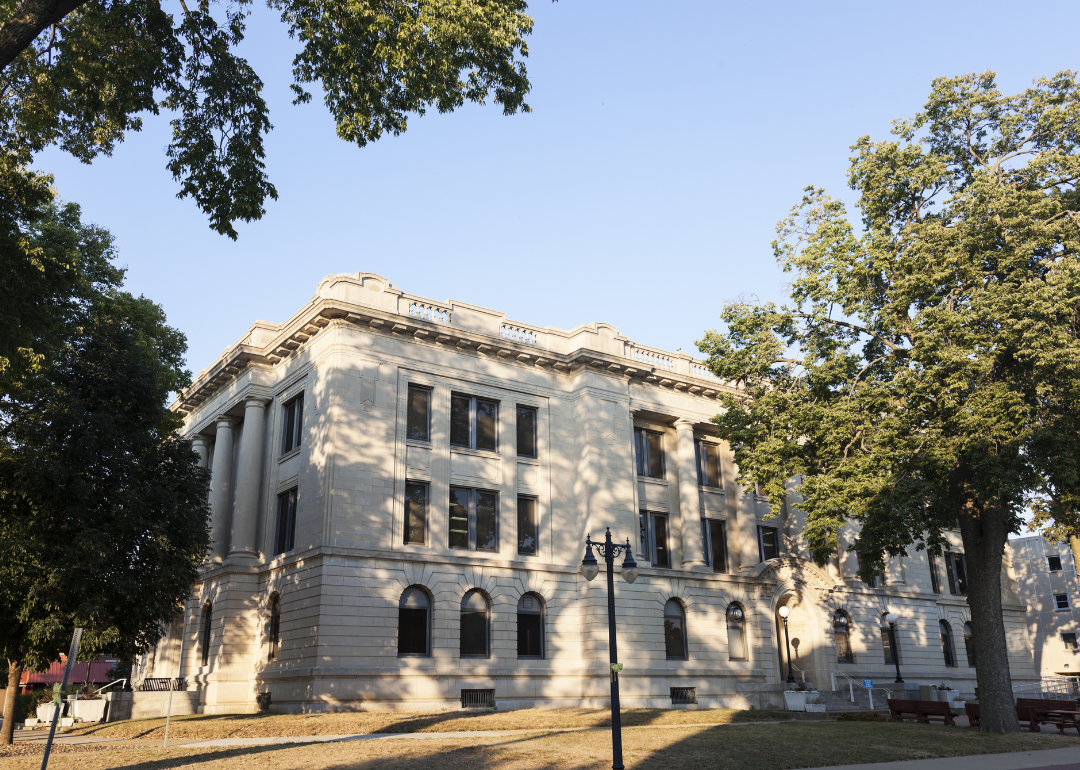
About
McDonough County sits in western Illinois, with Macomb at its heart and Western Illinois University as its defining landmark. Visitors find a blend of small-town streets, historic architecture, and the kind of cultural life that comes with a major university—concerts, art exhibits, and sporting events year-round.
Agriculture remains a pillar of the economy, joined by education, healthcare, manufacturing, and retail, giving the county a balanced employment base. For residents, the draw is a mix of affordability, opportunity, and community spirit.
Parks, trails, and nearby lakes invite weekend exploration, while the university adds energy and diversity to daily life. Whether you’re here to study, work, or settle in for the long term, McDonough County offers both the pace of rural Illinois and the amenities of an active college town.
Where is McDonough County, Illinois?
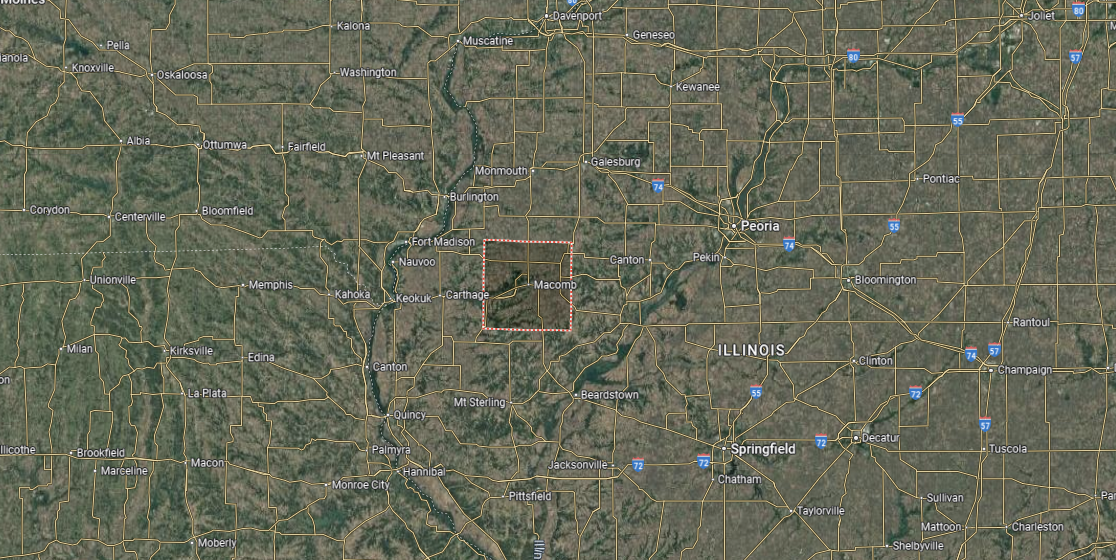
McDonough County is in the western part of Illinois, where gently rolling farmland meets small-town streets lined with historic buildings. It’s about 75 miles southwest of Peoria and reached by U.S. Routes 67 and 136, which cross open fields and pass through quiet rural communities.
The drive carries a steady rhythm of farmsteads, grain elevators, and patches of woodland along the way. It’s a place where the road feels unhurried, and the landscape invites you to slow down with it.
– Overall Rank: 687
– Population: 131,276
– Median household income: $74,606
– Median home value: $159,100 (77% own)
– Median rent: $850 (23% rent)
– Top public schools: Morton Junior High School (grade A), Lincoln Elementary School (grade A), Grundy Elementary School (grade A)
– Top private schools: Blessed Sacrament School (grade unavailable), Bethel Lutheran School (grade unavailable), St. Patrick School (grade unavailable)
– Top places: Morton (grade A), Washington (grade A), East Peoria (grade B+)

About
Tazewell County sits at the heart of central Illinois, offering a mix of thriving communities and easy access to Peoria’s metropolitan amenities. Pekin serves as the county seat, with Morton, East Peoria, and Washington adding their own blend of commerce, culture, and neighborhood charm.
A diverse economy—anchored by manufacturing, logistics, healthcare, and agriculture—supports a strong job market and steady growth. Residents enjoy an affordable cost of living, quality schools, and a wealth of recreation, from riverfront parks to golf courses and annual festivals.
With suburban convenience, rural beauty, and a close connection to nearby urban centers, Tazewell County offers a lifestyle that works for families, professionals, and retirees alike.
Where is Tazewell County, Illinois?
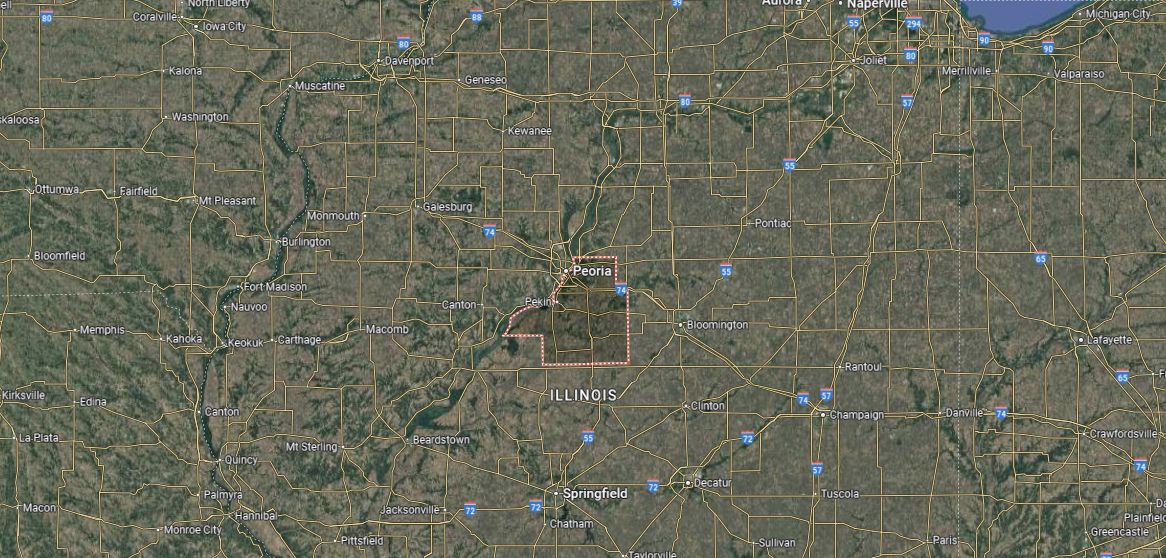
Tazewell County sits in central Illinois, stretching along the east bank of the Illinois River across from Peoria. It’s about 10 miles southeast of downtown Peoria and reached by Interstate 74 or Illinois Route 29, with the drive moving between river bluffs, farmland, and growing suburban neighborhoods.
Roads here can take you from quiet country lanes to the bustle of riverfront towns in just minutes. It’s close to the heart of the state, yet still holds pockets where the river and fields keep things calm.
#19. Adams County, Illinois
– Overall Rank: 620
– Population: 65,583
– Median household income: $63,767
– Median home value: $151,300 (72% own)
– Median rent: $782 (28% rent)
– Top public schools: Dewey Elementary School (grade B+), Liberty Elementary School (grade B+), Monroe Elementary School (grade B+)
– Top private schools: Quincy Notre Dame High School (grade A minus), St. Peter School (grade unavailable), St. Francis Solanus School (grade unavailable)
– Top places: Quincy (grade B+), Riverside Township (grade A minus), Ellington Township (grade A minus)
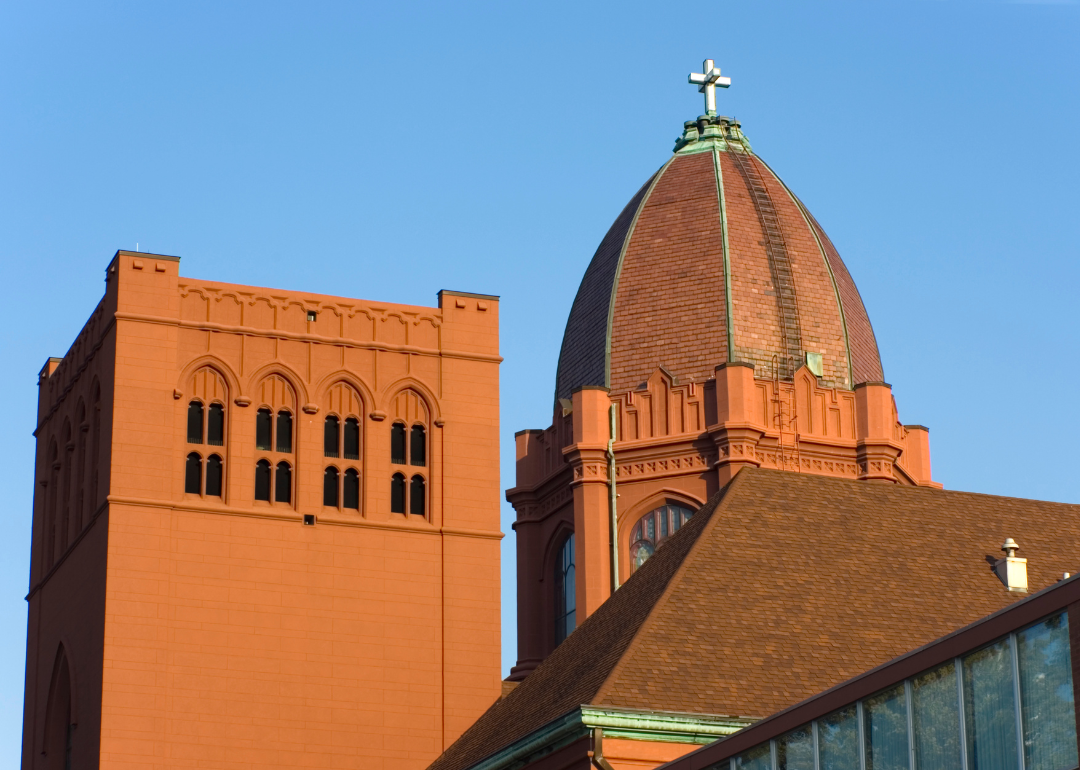
About
Set along Illinois’ western edge on the Mississippi River, Adams County offers historic charm and economic diversity. Quincy, the county seat, is a hub for healthcare, manufacturing, education, and retail, while agriculture and river-based commerce add stability.
The cost of living is below the national average, with housing options from historic riverfront homes to new suburban developments. Residents enjoy quality schools, well-kept parks, and cultural venues including theaters, museums, and music festivals.
Outdoor recreation thrives along the Mississippi with boating, fishing, and scenic trails minutes from town. Combining economic opportunity, affordability, and a strong sense of community, Adams County is a place where careers and personal life can both thrive.
Where is Adams County, Illinois?
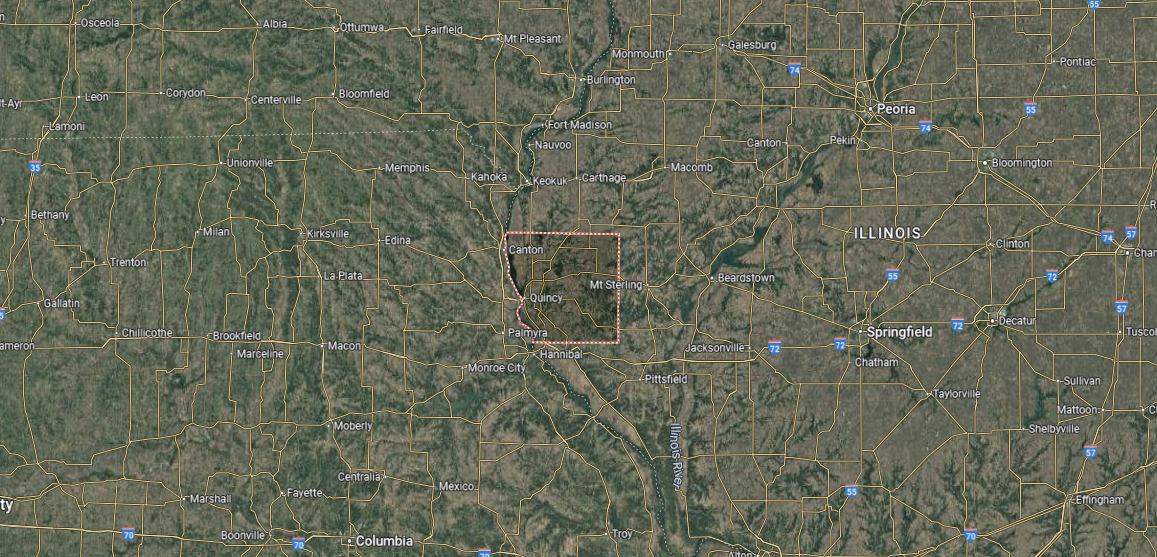
Adams County lies in the far western part of Illinois, with the Mississippi River forming its western border. It’s about 120 miles northwest of St. Louis and reached by U.S. Routes 24, 36, or 61, which lead through rolling farmland and small rural towns before arriving in Quincy, the county’s largest city.
The approach often follows long, open stretches where the horizon meets the river bluffs in the distance. It’s a place where the wide Mississippi frames the landscape, lending both openness and quiet.
#18. Macon County, Illinois
– Overall Rank: 615
– Population: 103,542
– Median household income: $59,622
– Median home value: $119,800 (69% own)
– Median rent: $774 (31% rent)
– Top public schools: Maroa-Forsyth Grade School (grade A minus), Mt. Zion Elementary School (grade A minus), Maroa-Forsyth Senior High School (grade B+)
– Top private schools: St. Teresa High School (grade A), Lutheran School Association of Decatur (grade B minus), Holy Family Catholic School (grade unavailable)
– Top places: Forsyth (grade A), Mount Zion (grade A minus), Long Creek (grade B)
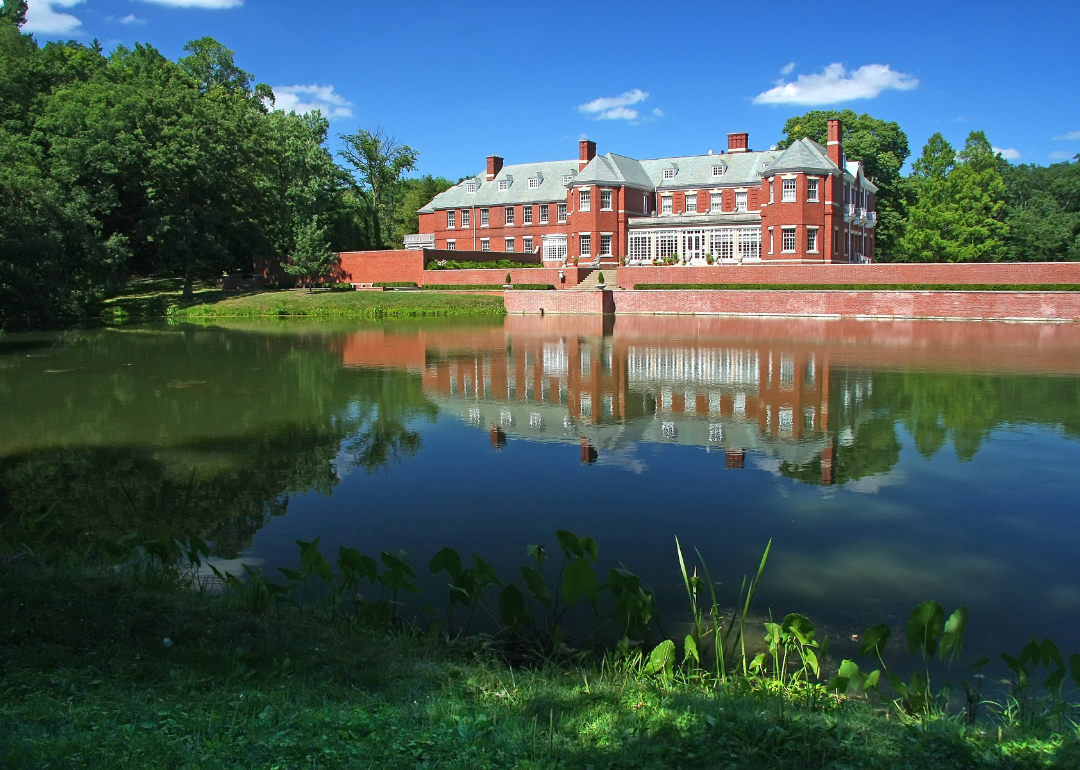
About
Located in the heart of Illinois, Macon County centers around Decatur, a city known for its manufacturing, agribusiness, and healthcare industries. Archer Daniels Midland and other major employers contribute to a stable job market, while retail, education, and small businesses diversify the economy.
The cost of living is competitive, and housing ranges from historic neighborhoods to modern suburban developments. Residents have access to quality schools, higher education at Millikin University and Richland Community College, and a variety of parks and recreation areas.
Lake Decatur offers boating, fishing, and trails, while local theaters, festivals, and museums add cultural depth. With its mix of economic opportunity, affordability, and community amenities, Macon County appeals to families, professionals, and retirees alike.
Where is Macon County, Illinois?
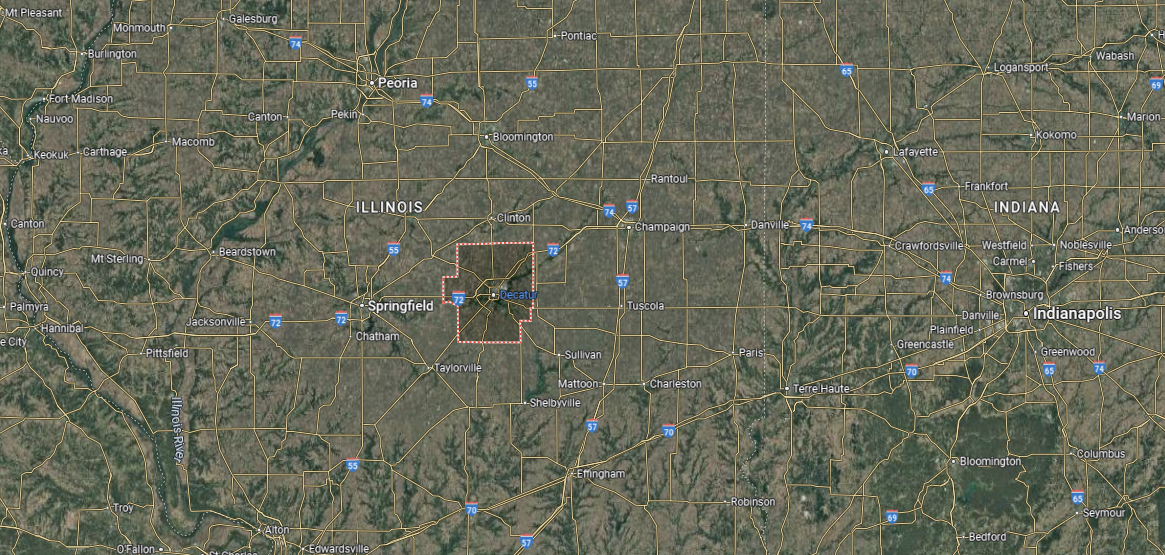
Macon County is in the heart of central Illinois, where the Sangamon River winds through broad stretches of farmland. It’s about 40 miles east of Springfield and reached by Interstate 72 or U.S. Route 51, with the drive passing through open fields and scattered rural communities.
As you near Decatur, the county’s largest city, grain elevators and silos rise against the flat horizon. It’s a place where the land feels expansive, yet the steady rhythm of the countryside keeps it grounded and calm.
#17. Piatt County, Illinois
– Overall Rank: 555
– Population: 16,698
– Median household income: $81,151
– Median home value: $168,300 (83% own)
– Median rent: $917 (17% rent)
– Top public schools: White Heath Elementary School (grade A), Monticello High School (grade A minus), Monticello Middle School (grade A minus)
– Top private schools: Monticello Christian Academy (grade unavailable), Faith Christian School (grade unavailable)
– Top places: Monticello (grade A), Sangamon Township (grade A), Monticello Township (grade A minus)

About
In Piatt County, the roads roll past farmland, small towns, and quiet parks, creating a rhythm of life that feels both steady and welcoming. Monticello, the county seat, blends historic architecture with modern conveniences, its downtown lined with shops, cafés, and community gathering spots.
Agriculture forms the backbone of the local economy, supported by manufacturing, education, and small businesses that keep jobs close to home. People are drawn here for more than just the landscape. The cost of living is low, housing is varied and affordable, and schools are well-regarded.
Allerton Park and Retreat Center offers a scenic escape, while community events and festivals bring neighbors together. For those seeking a place where economic stability meets a slower, more connected way of life, Piatt County holds lasting appeal.
Where is Piatt County, Illinois?
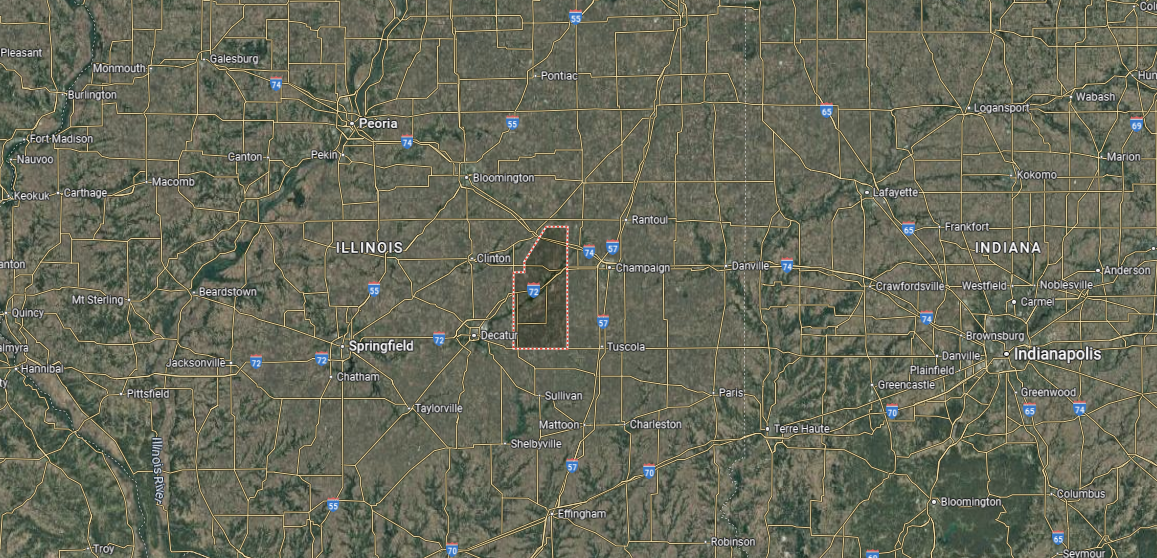
Piatt County sits in east-central Illinois, surrounded by flat, fertile farmland that seems to stretch without end. It’s about 25 miles west of Champaign and reached by Interstate 72 or Illinois Route 105, with the drive taking you past fields, grain bins, and clusters of small-town streets.
The approach is quiet and measured, with long views that shift only when you pass a grove of trees or a winding creek. It’s the kind of landscape where the openness itself feels like a form of seclusion.
#16. Woodford County, Illinois
– Overall Rank: 495
– Population: 38,414
– Median household income: $80,093
– Median home value: $186,100 (82% own)
– Median rent: $938 (18% rent)
– Top public schools: Congerville Elementary School (grade A), Germantown Hills Middle School (grade A), Germantown Hills Elementary School (grade A)
– Top private schools: Countryside Private School (grade unavailable), St. Mary Elementary School (grade unavailable), Linn Mennonite Christian School (grade unavailable)
– Top places: Germantown Hills (grade A), Metamora (grade A), Eureka (grade B+)
You may also like: Romaine lettuce, ham, and other groceries that rose in price in the Midwest last month

About
Set between Peoria and Bloomington-Normal, Woodford County offers the best of both worlds—peaceful rural living with quick access to major city amenities. Eureka, the county seat, anchors the area with local shops, restaurants, and Eureka College, while surrounding towns and farmland highlight the county’s agricultural heritage.
Manufacturing, healthcare, and education round out a stable economy, and many residents benefit from short commutes to nearby employment hubs. For those considering a move, Woodford County delivers affordable housing, safe neighborhoods, and well-regarded schools.
Outdoor recreation thrives in its forest preserves, parks, and along the Illinois River, while community festivals keep the calendar full year-round. It’s a place where quality of life comes naturally, supported by a strong economic base and a welcoming spirit.
Where is Woodford County, Illinois?
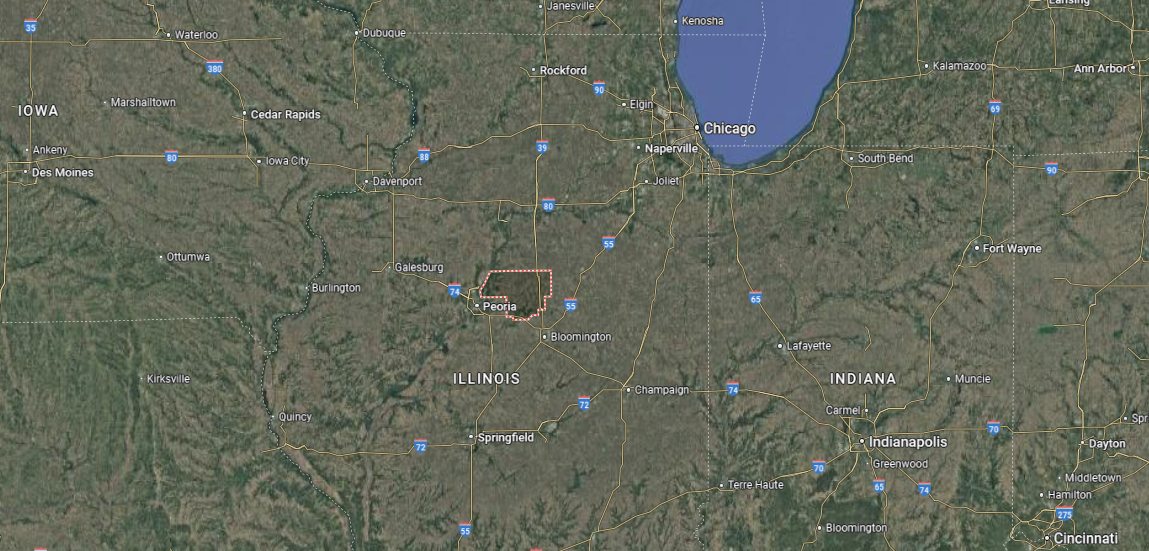
Woodford County lies in central Illinois, just north of Peoria, where farmland meets stretches of timber along the Illinois River. It’s about 15 miles from downtown Peoria and reached by Illinois Routes 116 or 26, with the drive carrying you over gentle hills and past fields broken by small towns.
The approach blends open vistas with winding roads near the river bluffs, giving a sense of quiet between destinations. It’s close to the city yet feels set apart, where the landscape still leads the pace.
#15. McHenry County, Illinois
– Overall Rank: 487
– Population: 311,133
– Median household income: $100,101
– Median home value: $270,600 (82% own)
– Median rent: $1,310 (18% rent)
– Top public schools: Cary-Grove Community High School (grade A), Prairie Ridge High School (grade A), Crystal Lake South High School (grade A)
– Top private schools: Trinity Oaks Christian Academy (grade A), Marian Central Catholic High School (grade B+), St. Thomas the Apostle School (grade B minus)
– Top places: Fox River Grove (grade A+), Lakewood (grade A), Crystal Lake (grade A)
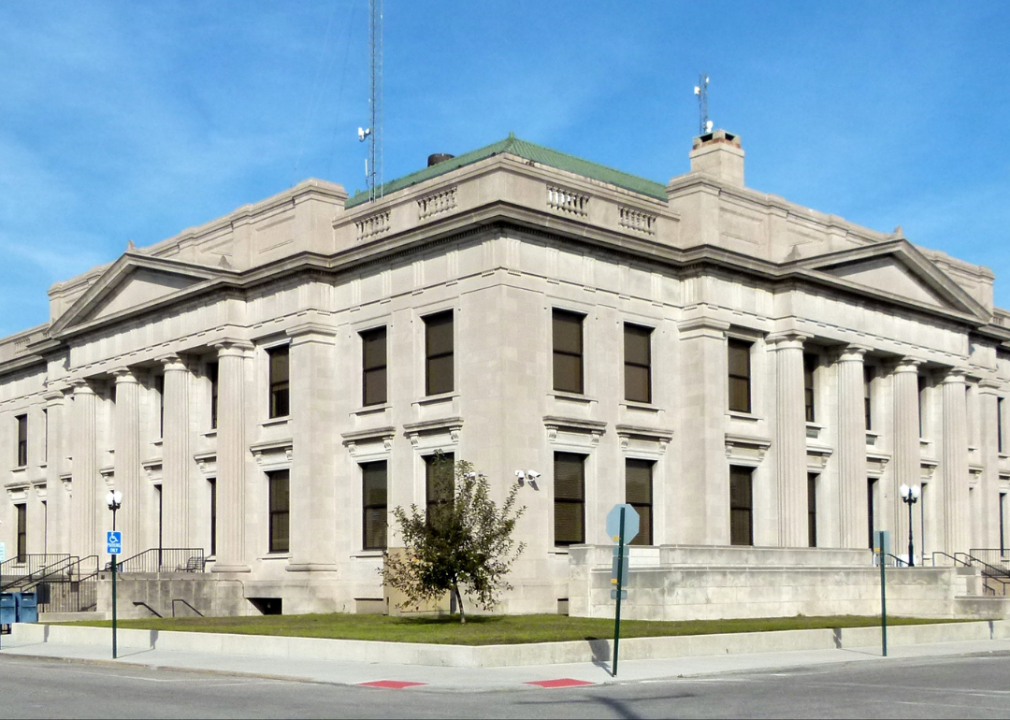
About
McHenry County combines scenic open spaces with the conveniences of Chicago’s northwest suburbs. Crystal Lake, Woodstock, and McHenry anchor a diverse economy built on manufacturing, healthcare, retail, and agriculture, with strong commuter links to the Chicago metro area.
The housing market offers everything from historic Victorians to modern subdivisions, paired with a cost of living that remains competitive for the region. Quality schools, well-kept parks, and abundant recreation—from boating on the Fox River to hiking in Moraine Hills State Park—add to its appeal.
With steady job opportunities, varied communities, and a mix of rural charm and suburban access, McHenry County draws those who want both breathing room and connectivity.
Where is McHenry County, Illinois?
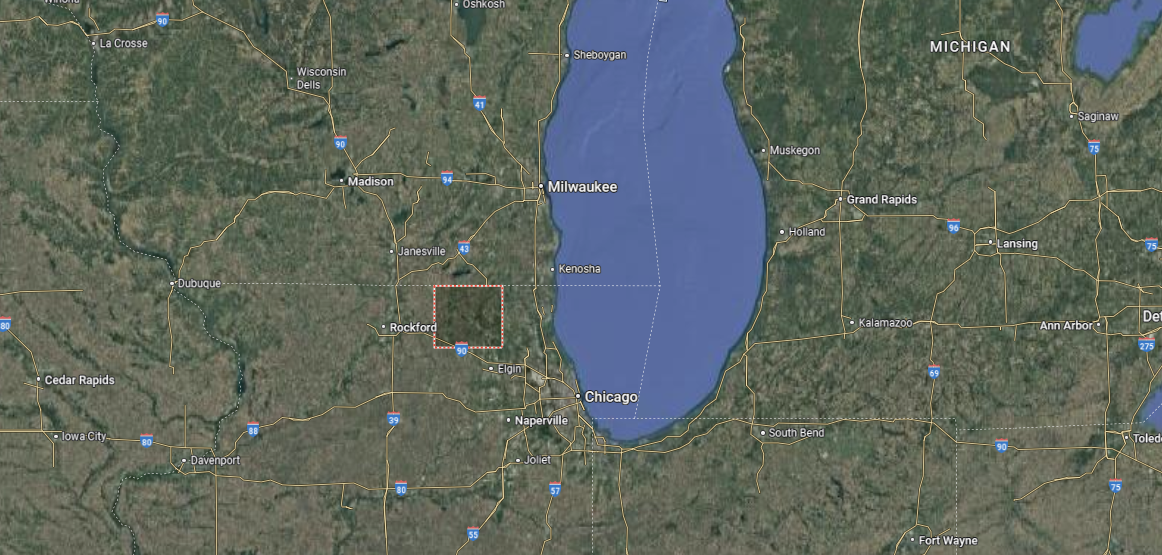
#14. Jackson County, Illinois
– Overall Rank: 410
– Population: 53,176
– Median household income: $44,847
– Median home value: $123,400 (48% own)
– Median rent: $757 (52% rent)
– Top public schools: Carbondale Community High School (grade A), Giant City Elementary School (grade A), Unity Point Elementary School (grade B+)
– Top private schools: Trinity Christian School of Carbondale (grade B minus), St. Andrew Catholic School (grade unavailable), Murphysboro Christian Academy (grade unavailable)
– Top places: Carbondale (grade B+), Murphysboro (grade B), Makanda Township (grade A+)
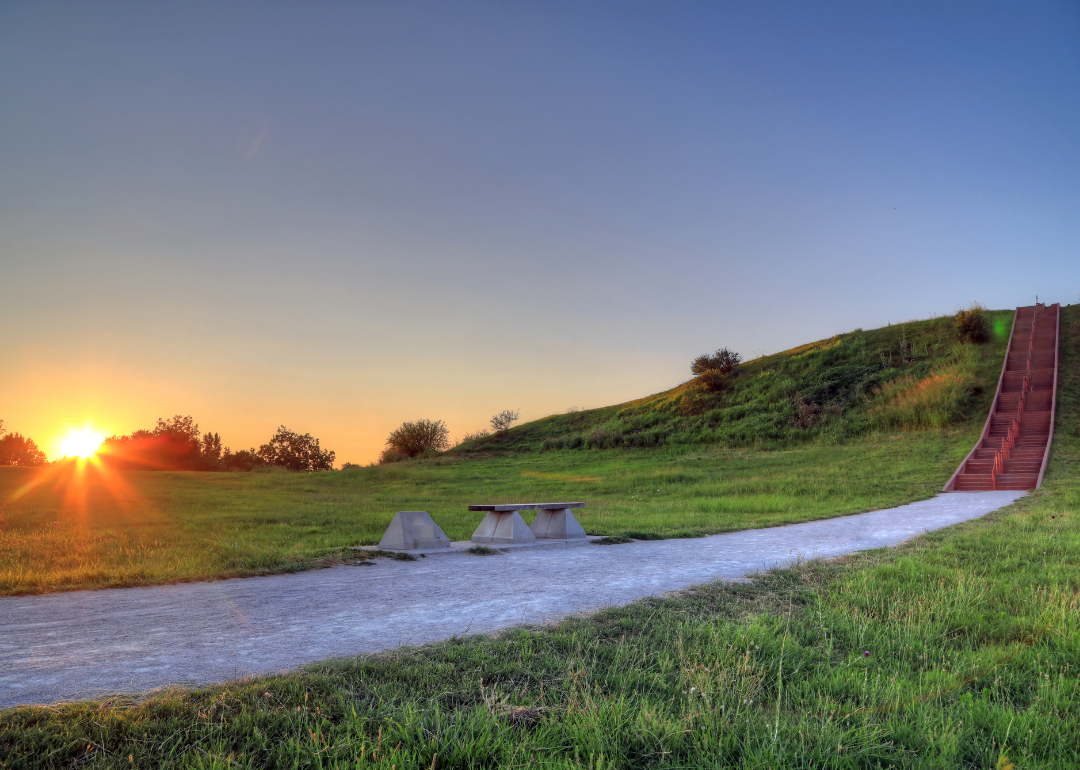
About
Where is Jackson County, Illinois?
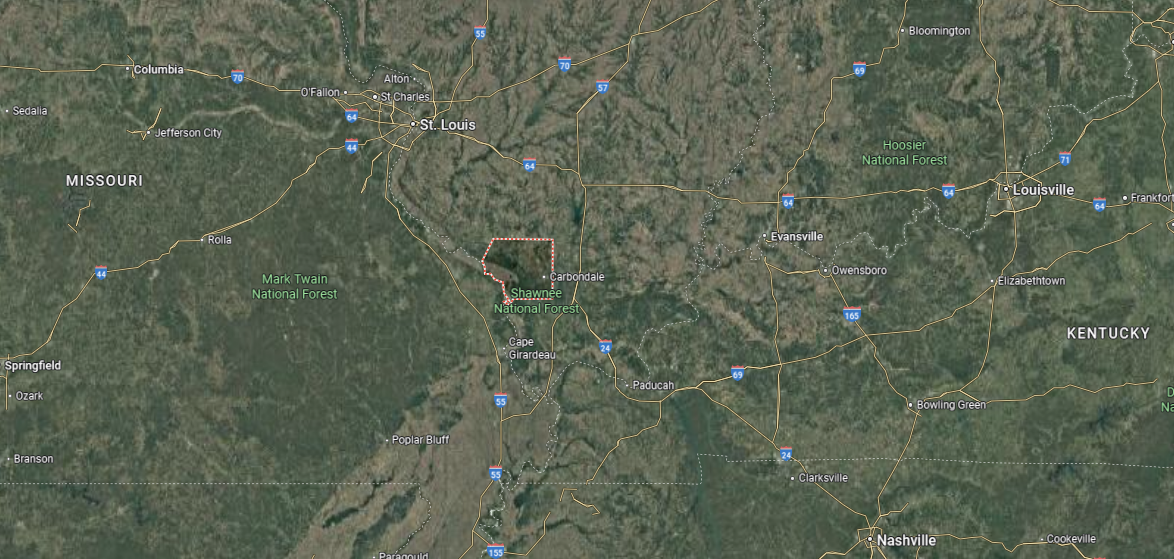
Jackson County sits in southern Illinois, where the Mississippi River curves along its western edge and the Shawnee Hills rise to the east. It’s about 60 miles southeast of St. Louis and reached by Interstate 57 or Illinois Route 13, with the drive weaving between forested ridges, farmland, and river bottoms.
Approaching from the east brings glimpses of towering bluffs, while the western route follows open valleys toward the water. It’s a place where hills, river, and sky meet, giving it a feeling both open and tucked away.
#13. Madison County, Illinois
– Overall Rank: 394
– Population: 265,512
– Median household income: $71,759
– Median home value: $159,400 (73% own)
– Median rent: $938 (27% rent)
– Top public schools: St. Jacob Elementary School (grade A), Columbus Elementary School (grade A), Alhambra Primary School (grade A)
– Top private schools: Metro-East Lutheran High School (grade A minus), Father McGivney Catholic High School (grade B+), Marquette Catholic High School (grade B+)
– Top places: Glen Carbon (grade A+), Edwardsville (grade A+), Maryville (grade A)

About
Madison County offers a prime location in the Metro East region, just across the river from St. Louis. Cities like Edwardsville, Granite City, and Alton provide a mix of historic neighborhoods, modern subdivisions, and rural properties, all at a cost of living below the national average.
The economy is fueled by manufacturing, healthcare, education, retail, and logistics, giving residents diverse career options. Quality schools, multiple parks and trails, and access to the Mississippi River add to the county’s appeal.
From vibrant downtowns to quiet countryside, Madison County delivers both convenience and community—a place where strong job markets meet a lifestyle that works for families, commuters, and retirees alike.
Where is Madison County, Illinois?
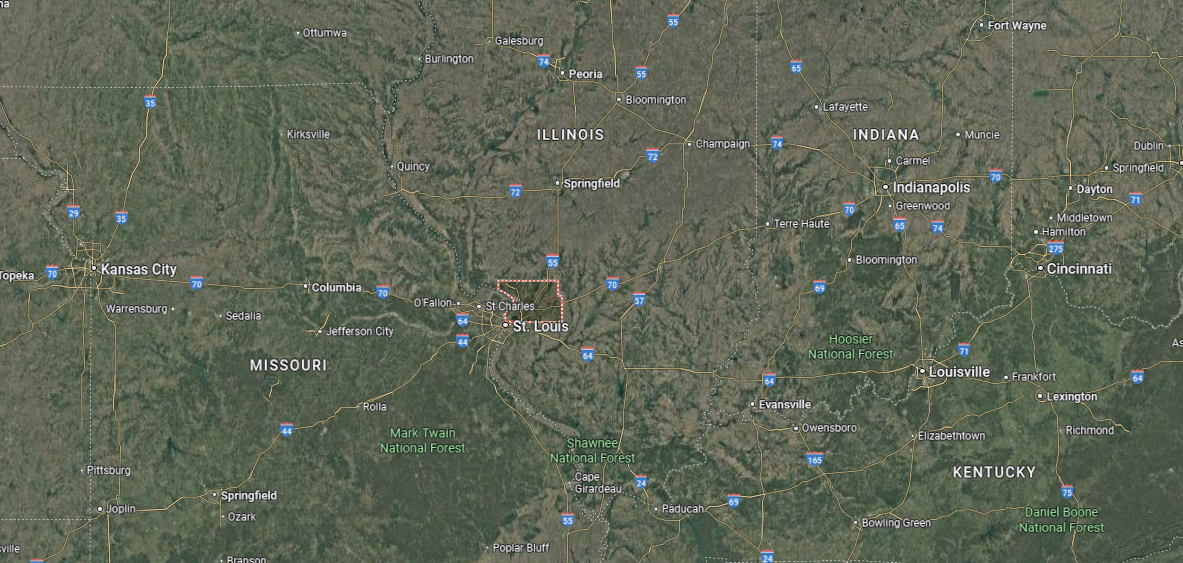
Madison County is in southwestern Illinois, just across the Mississippi River from St. Louis, Missouri. It’s about 20 miles northeast of downtown St. Louis and reached by Interstates 55, 70, or 255, which pass through a mix of suburban communities, industrial corridors, and open farmland.
The approach shifts quickly from city views to the quieter rhythm of small towns and rural stretches. It’s close to a major metro, yet there are pockets where the river and fields make it feel apart from the rush.
#12. Kendall County, Illinois
– Overall Rank: 346
– Population: 132,795
– Median household income: $106,358
– Median home value: $288,100 (84% own)
– Median rent: $1,695 (16% rent)
– Top public schools: Lisbon Grade School (grade A), Oswego East High School (grade A), Bristol Grade School (grade A minus)
– Top private schools: Yorkville Christian High School (grade B), Parkview Christian Academy (grade C+), Cross Lutheran School (grade unavailable)
– Top places: Oswego (grade A), Yorkville (grade A minus), Montgomery (grade B+)
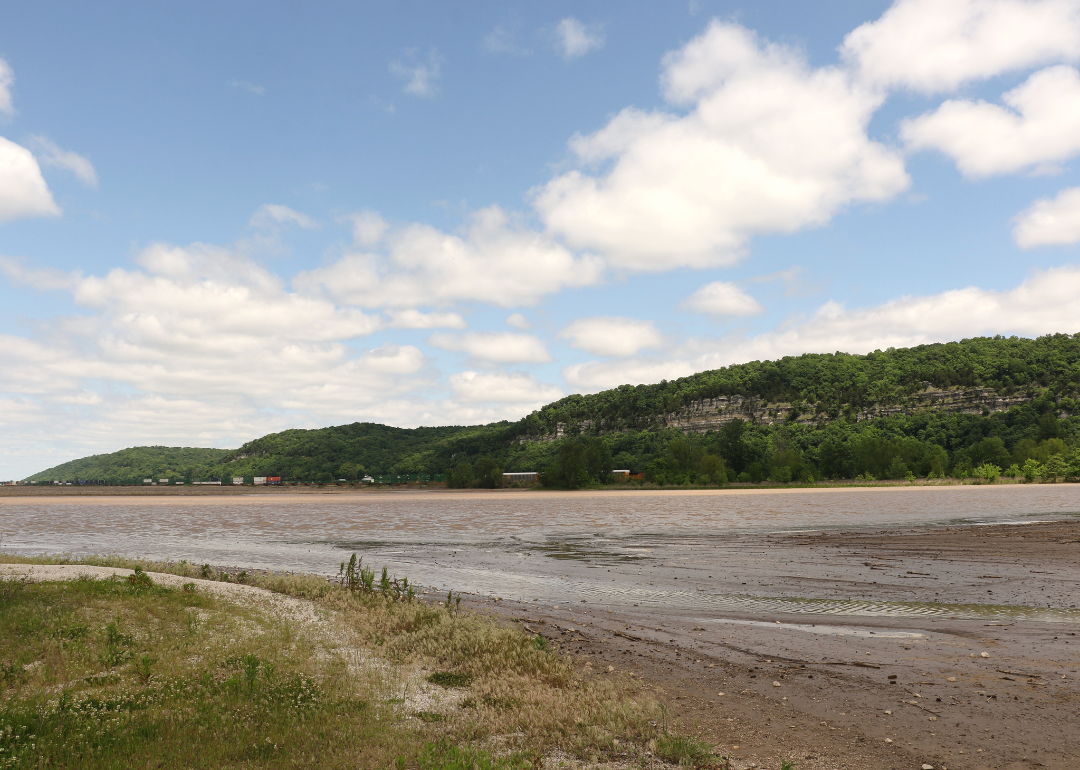
About
Kendall County sits where suburban Chicago begins to give way to open farmland, offering a blend of growing communities and rural calm. Yorkville, the county seat, and towns like Oswego and Plano have seen steady population growth, fueled by families and professionals drawn to newer housing, quality schools, and expanding local amenities.
The economy is anchored by manufacturing, healthcare, retail, and small businesses, with many residents also commuting to jobs in the Chicago metro area. Life here offers a balance—weekends might be spent along the Fox River, exploring local parks, or attending seasonal festivals in historic downtowns.
Housing remains more affordable than closer-in suburbs, and the pace of life is just a bit slower without sacrificing access to major highways and urban conveniences. For those seeking both opportunity and breathing room, Kendall County continues to be a place on the rise.
Where is Kendall County, Illinois?
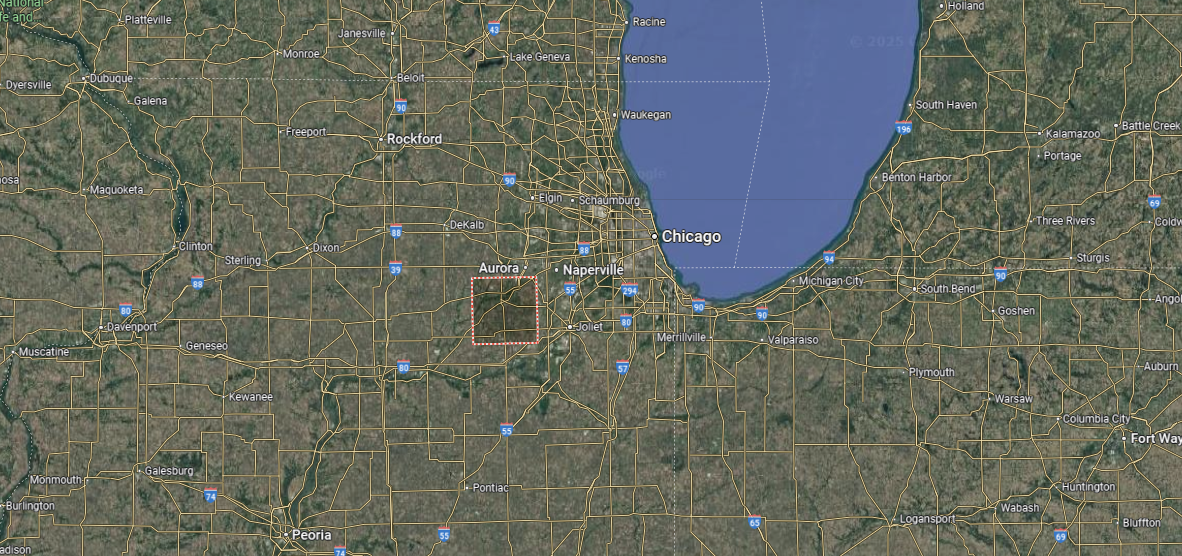
Kendall County lies in northeastern Illinois, where the outer edges of the Chicago suburbs meet open farmland along the Fox River. It’s about 50 miles southwest of downtown Chicago and reached by U.S. Route 34 or Illinois Route 47, with the drive transitioning from busy arterial roads to quieter two-lane highways.
Along the way, neighborhoods give way to fields, barns, and riverfront parks. It’s near enough for an easy commute, yet far enough that the pace slows to something more relaxed.
#11. Monroe County, Illinois
– Overall Rank: 309
– Population: 34,905
– Median household income: $100,685
– Median home value: $254,100 (84% own)
– Median rent: $956 (16% rent)
– Top public schools: Rogers Elementary School (grade A minus), Parkview Elementary School (grade A minus), Gardner Elementary School (grade A minus)
– Top private schools: Gibault Catholic High School (grade B+), Immaculate Conception School (grade unavailable), SS. Peter & Paul Catholic School (grade unavailable)
– Top places: Columbia (grade A), Waterloo (grade A minus), Hecker (grade B+)
You may also like: How road conditions in Illinois have deteriorated since 2000
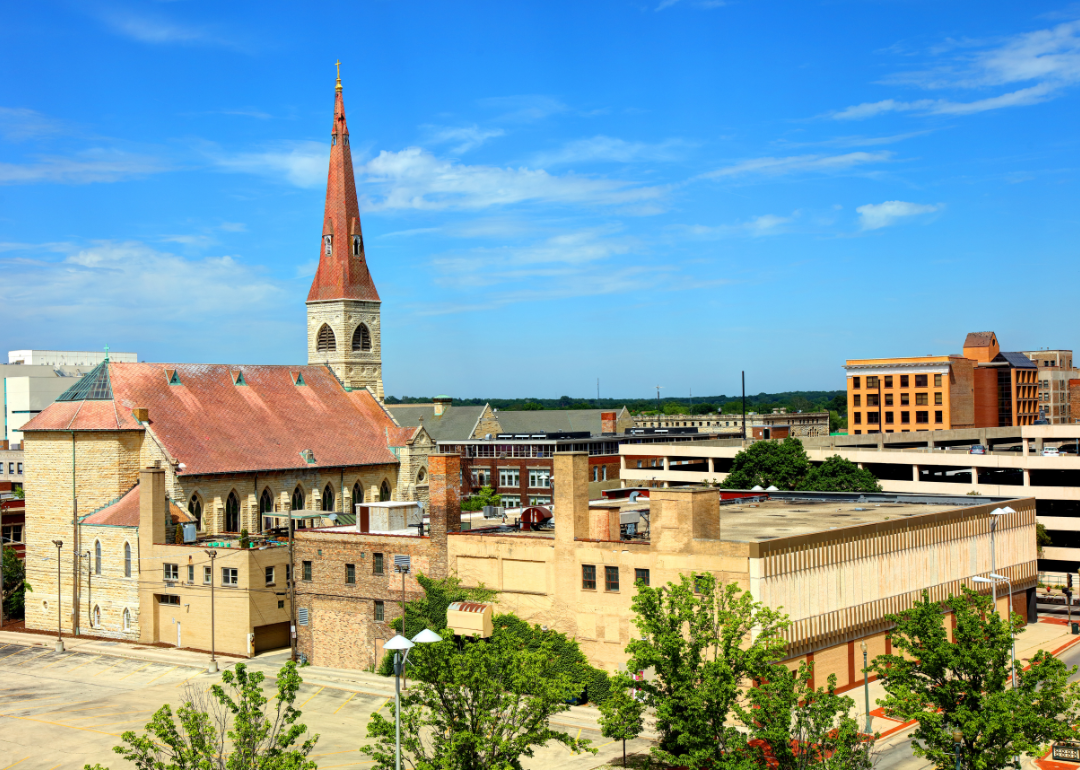
About
Set in southwestern Illinois just minutes from downtown St. Louis, Monroe County offers a rare balance of rural charm and metropolitan access. Waterloo, the county seat, and Columbia lead a collection of vibrant communities where historic architecture meets modern growth.
The economy is supported by manufacturing, agriculture, retail, and easy commuting links to the St. Louis job market, giving residents both local and regional opportunities. Affordable housing, highly rated schools, and safe neighborhoods make it a natural choice for families and professionals.
Outdoor enthusiasts enjoy Mississippi River overlooks, local parks, and seasonal festivals that keep community spirit alive year-round. Whether you’re seeking a peaceful home base or a convenient launch point for city life, Monroe County delivers both stability and a welcoming sense of place.
Where is Monroe County, Illinois?
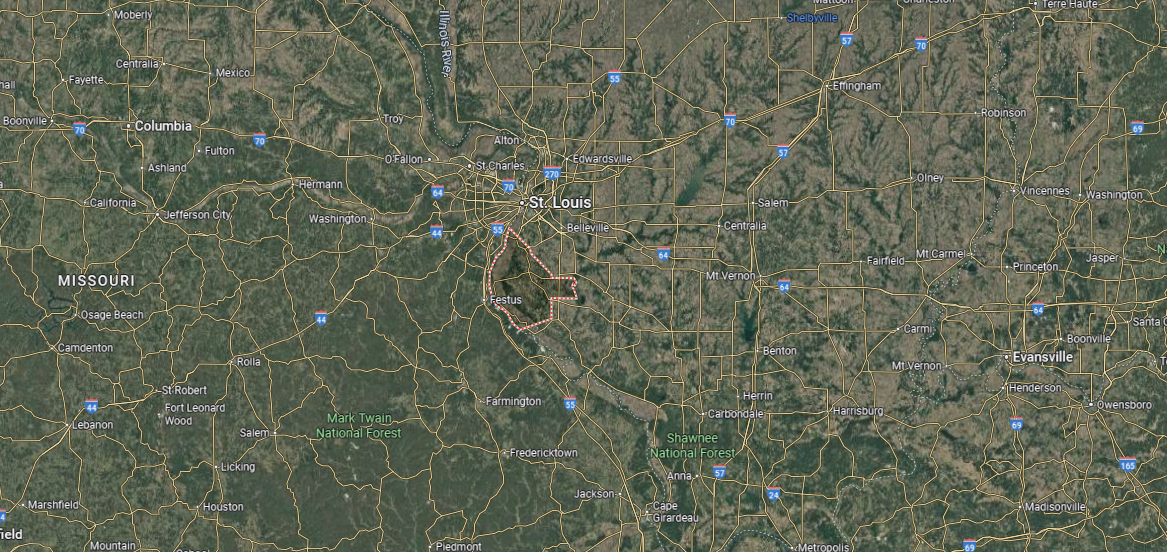
Monroe County is in southwestern Illinois, bordered by the Mississippi River on its western side and rolling bluffs to the east. It’s about 25 miles south of St. Louis and reached by Illinois Route 3 or Route 156, with the drive winding past farmland, limestone outcrops, and small historic towns.
Approaching from the north offers sweeping river views, while the southern route threads through quiet valleys and wooded hills. It’s close enough to the city for convenience, yet far enough that the river and bluffs feel like a natural boundary from the rest of the world.
#10. Will County, Illinois
– Overall Rank: 289
– Population: 696,774
– Median household income: $103,678
– Median home value: $283,600 (82% own)
– Median rent: $1,342 (18% rent)
– Top public schools: Neuqua Valley High School (grade A+), Graham Elementary School (grade A+), Scullen Middle School (grade A+)
– Top private schools: Joliet Catholic Academy (grade A), Providence Catholic High School (grade A minus), Illinois Lutheran High School (grade A minus)
– Top places: Frankfort (grade A), Plainfield (grade A), Mokena (grade A)
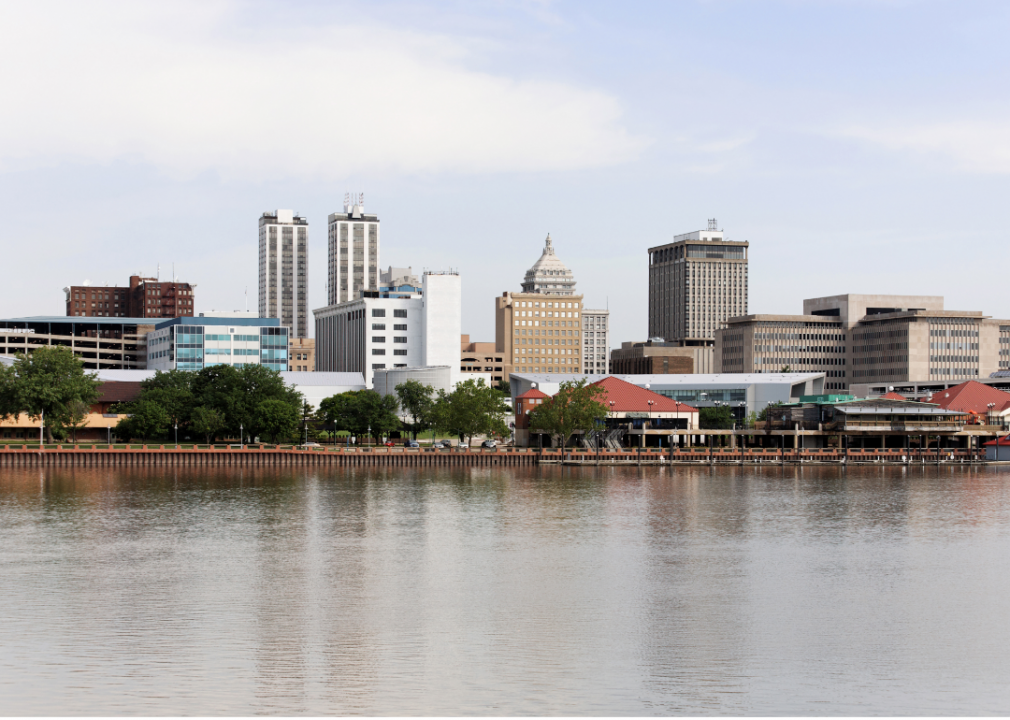
About
Will County sits at the crossroads of major interstates southwest of Chicago, making it one of Illinois’ fastest-growing regions. Joliet anchors a diverse economy powered by logistics, manufacturing, healthcare, education, and retail, while agriculture still plays a role in the county’s rural areas.
Housing ranges from new suburban developments to historic homes, with prices that remain competitive for the Chicago metro. Residents enjoy strong school districts, extensive park systems, and cultural destinations like Rialto Square Theatre and Chicagoland Speedway.
With rapid economic growth, a variety of job opportunities, and easy access to both city life and open countryside, Will County offers a dynamic yet livable setting for families and professionals alike.
Where is Will County, Illinois?
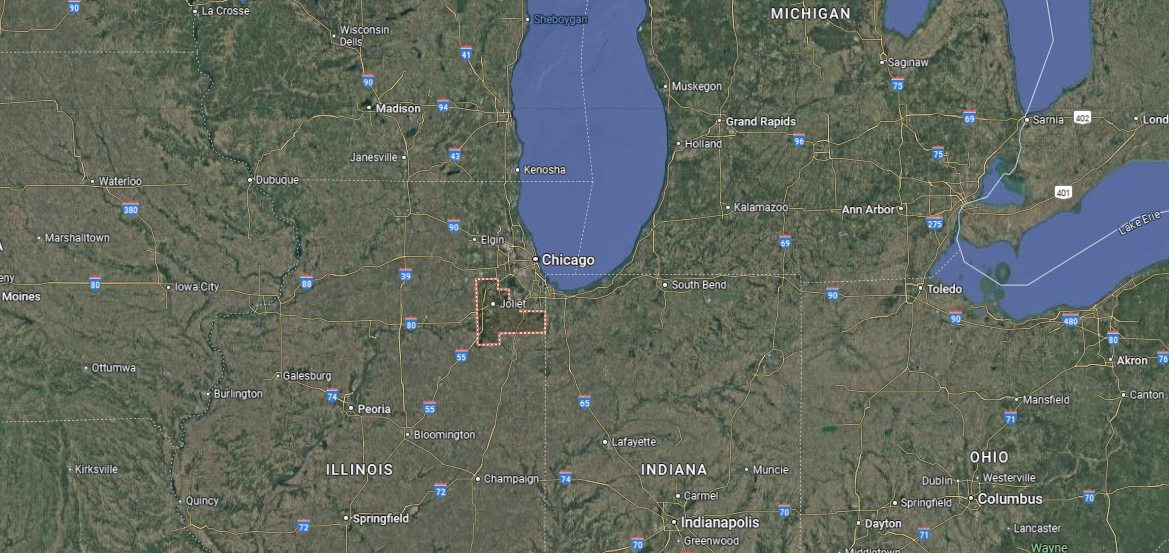
Will County sits in northeastern Illinois, where the outer Chicago suburbs blend into farmland, forest preserves, and river valleys. It’s about 35 miles southwest of downtown Chicago and reached by Interstates 55, 80, or 355, with the drive shifting from urban expressways to quieter stretches of open land.
The approach can take you past the Des Plaines River, old canal towns, and broad prairie landscapes. It’s a place where city access is easy, yet moments of stillness are never far away.
#9. Peoria County, Illinois
– Overall Rank: 288
– Population: 181,186
– Median household income: $63,409
– Median home value: $150,400 (66% own)
– Median rent: $909 (34% rent)
– Top public schools: Dunlap High School (grade A), Wilder-Waite Elementary School (grade A), Ridgeview Elementary School (grade A)
– Top private schools: Daarul Uloom Islamic School (grade A+), Peoria Notre Dame High School (grade B+), Peoria Christian School (grade B minus)
– Top places: Dunlap (grade A+), Elmwood (grade A minus), Peoria Heights (grade A minus)
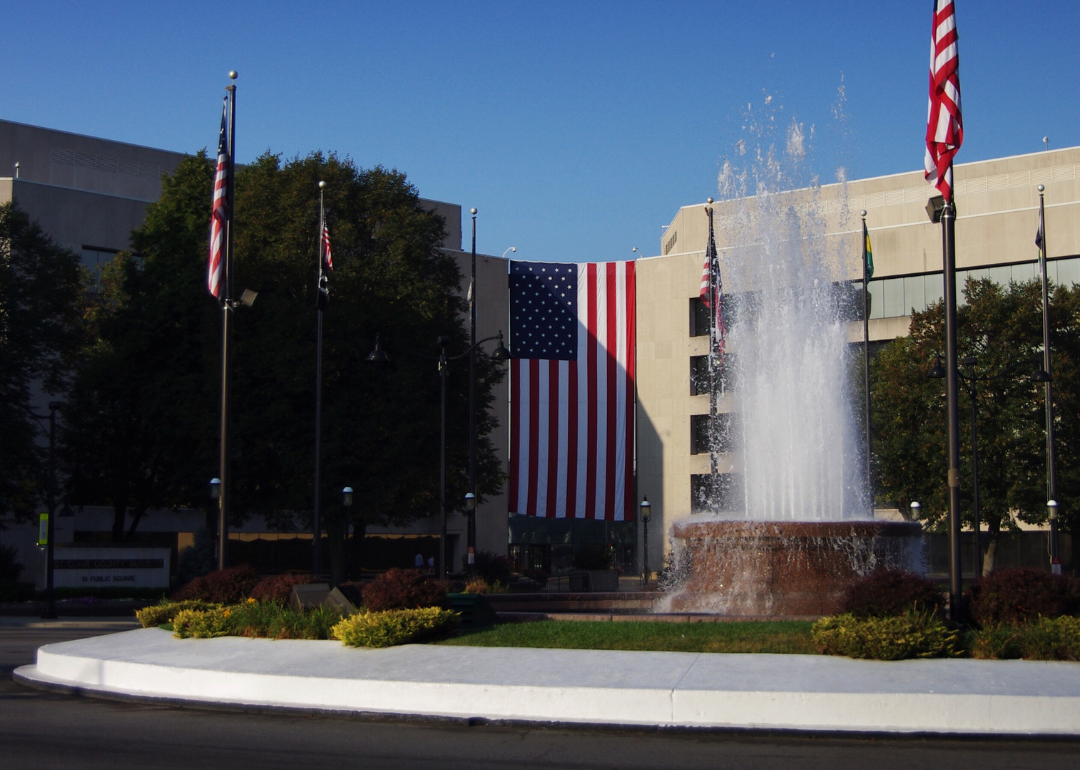
About
Stretching along the Illinois River, Peoria County blends natural beauty with a thriving urban center. The city of Peoria anchors the region, offering a diverse economy built on healthcare, manufacturing, education, and logistics, supported by both long-standing employers and new business growth.
Affordable housing, varied neighborhoods, and a cost of living below the national average make it an attractive place to settle. Life here offers plenty to explore—riverfront parks and trails, vibrant arts venues, and seasonal festivals that bring the community together.
Forest preserves, golf courses, and boating on the Illinois River add to the year-round recreation. With its mix of job opportunities, accessible amenities, and a strong community spirit, Peoria County is where work and lifestyle meet in perfect balance.
Where is Peoria County, Illinois?
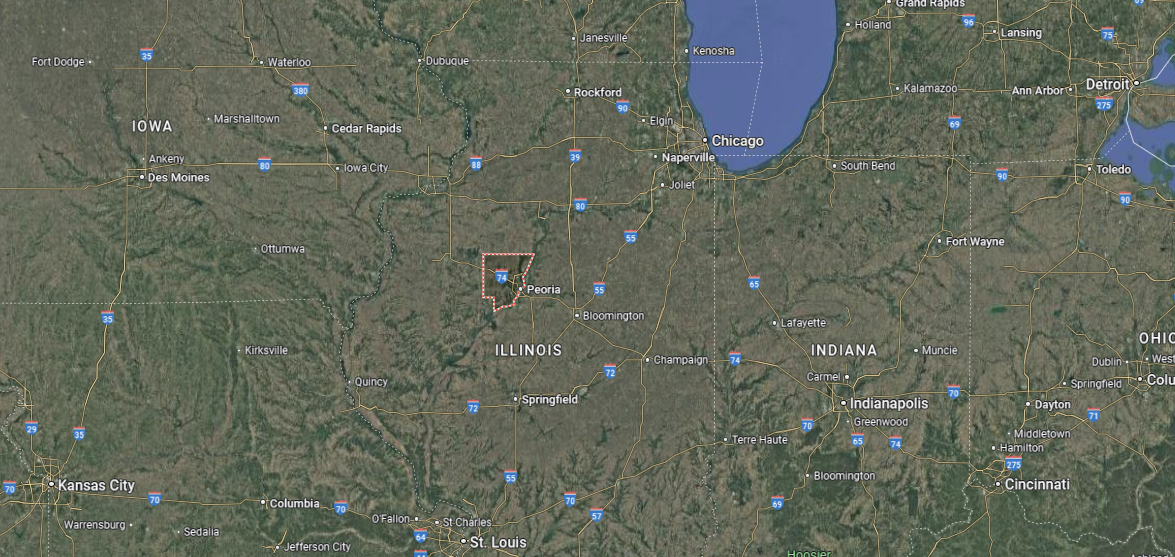
Peoria County lies in central Illinois, anchored by the Illinois River and the city of Peoria along its eastern edge. It’s about 165 miles southwest of Chicago and reached by Interstate 74 or Illinois Route 29, with the drive moving between river bluffs, farmland, and small towns.
Approaching from the west brings open fields that drop toward the river valley, while the eastern approach winds past wooded slopes and water views. It’s a place where the river shapes both the land and the sense of calm that settles in when you arrive.
#8. St. Clair County, Illinois
– Overall Rank: 240
– Population: 256,791
– Median household income: $68,915
– Median home value: $158,500 (68% own)
– Median rent: $1,002 (32% rent)
– Top public schools: Scott Elementary School (grade A), Mascoutah Middle School (grade A), J. Emmett Hinchcliffe Sr. Elementary School (grade A)
– Top private schools: Governor French Academy (grade A+), Althoff Catholic College Preparatory High School (grade A), First Baptist Academy (grade B)
– Top places: O’Fallon (grade A+), Shiloh (grade A), Swansea (grade A)

About
St. Clair County may be part of the St. Louis metro, but it has its own identity—rooted in history, community, and a mix of vibrant towns. Belleville, the county seat, blends historic brick streets with modern shops and cafés, while O’Fallon and Fairview Heights bring growing neighborhoods and expanding business districts.
The economy is anchored by Scott Air Force Base, healthcare, manufacturing, retail, and education, offering a wide range of local job opportunities. Residents here enjoy affordable housing, safe neighborhoods, and schools that serve both established suburbs and smaller rural communities.
Parks, cultural events, and easy access to St. Louis attractions make weekends full of possibilities. St. Clair County offers a balance of suburban convenience and small-town charm, making it a place people choose to put down roots.
Where is St. Clair County, Illinois?
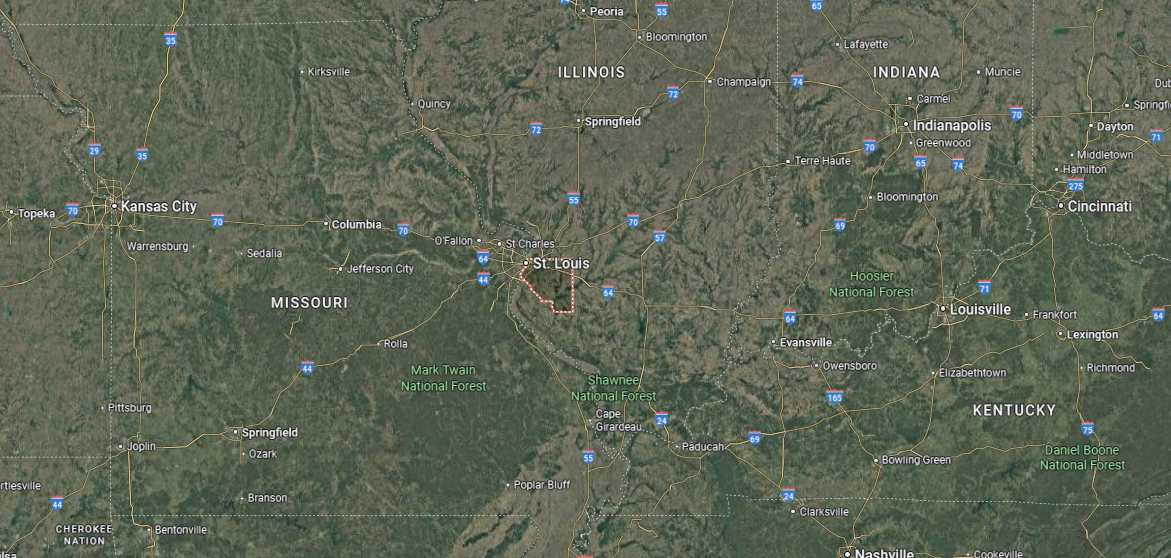
St. Clair County is in southwestern Illinois, just across the Mississippi River from downtown St. Louis, Missouri. It’s about 15 miles from the heart of St. Louis and reached by Interstates 64, 55, or 255, which move quickly from city streets to suburban neighborhoods and stretches of open farmland.
Approaching from the east takes you through fields and small towns before the skyline of St. Louis appears in the distance. It’s close enough for the energy of the city to be within reach, yet far enough that the pace can shift to something quieter.
#7. Kane County, Illinois
– Overall Rank: 232
– Population: 517,254
– Median household income: $96,400
– Median home value: $290,100 (75% own)
– Median rent: $1,335 (25% rent)
– Top public schools: Illinois Mathematics and Science Academy (grade A+), St. Charles North High School (grade A+), St. Charles East High School (grade A)
– Top private schools: Elgin Academy (grade A+), The Einstein Academy (grade A+), Marmion Academy (grade A)
– Top places: Campton Hills (grade A+), Geneva (grade A+), St. Charles (grade A+)
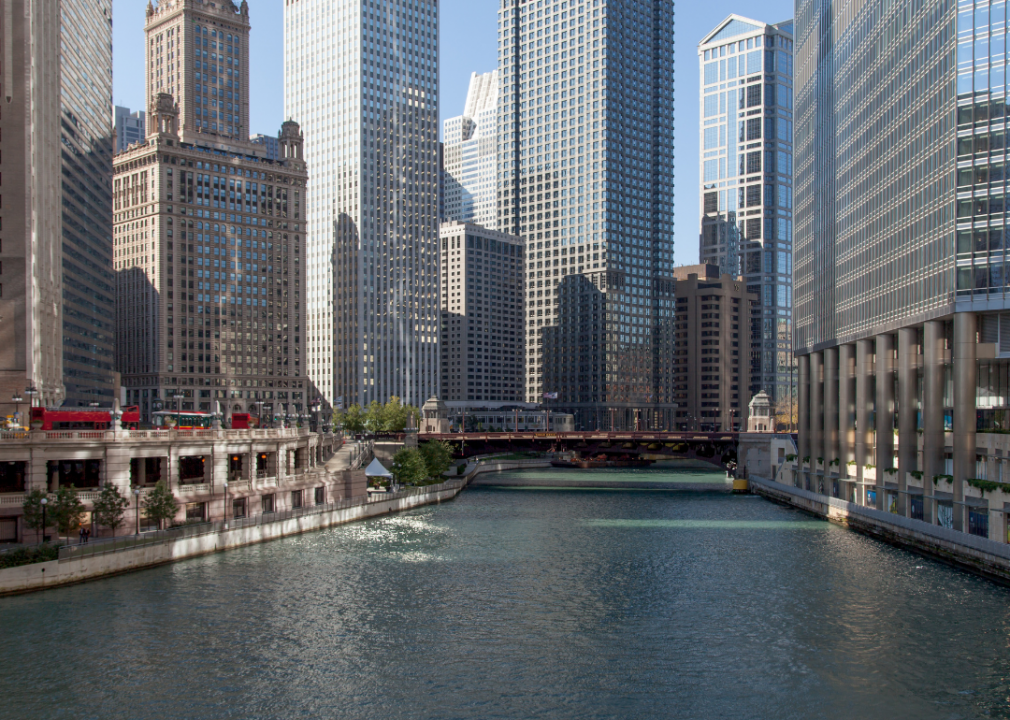
About
Kane County stretches along the Fox River in Chicago’s western suburbs, blending historic downtowns with fast-growing communities. Aurora and Elgin anchor a diverse economy powered by manufacturing, healthcare, education, retail, and technology, while smaller towns offer a quieter pace.
Housing ranges from century-old homes to new developments, with prices that remain competitive for the region. Residents enjoy strong schools, extensive park systems, and year-round recreation along the Fox River trails.
With quick access to Chicago by car or train, a varied job market, and a mix of urban energy and suburban comfort, Kane County continues to draw families, professionals, and retirees looking for both opportunity and livability.
Where is Kane County, Illinois?
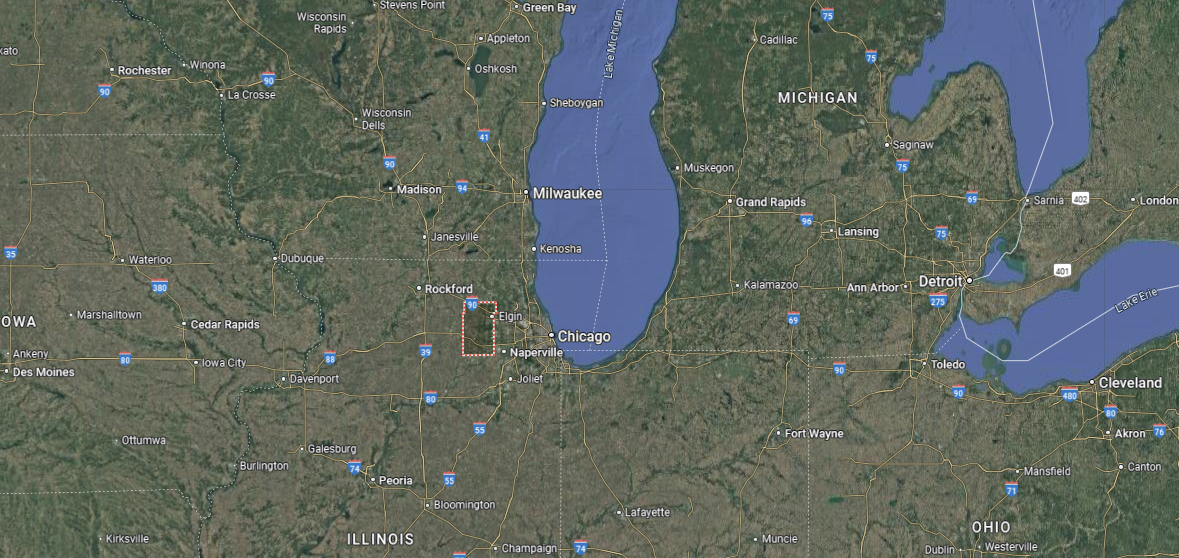
Kane County sits in northeastern Illinois, where the Fox River winds through a mix of suburban towns, forest preserves, and farmland. It’s about 40 miles west of Chicago and reached by Interstate 88 or U.S. Route 20, with the drive moving from busy suburban corridors to quieter stretches along the river.
Approaching from any direction brings views of tree-lined streets, parkland, and open fields beyond the towns. It’s close enough to the metro area for convenience, yet the river and green spaces give it a slower, more settled rhythm.
#6. Cook County, Illinois
– Overall Rank: 220
– Population: 5,225,367
– Median household income: $78,304
– Median home value: $293,700 (58% own)
– Median rent: $1,318 (42% rent)
– Top public schools: Payton College Preparatory High School (grade A+), Northside College Preparatory High School (grade A+), Whitney M. Young Magnet High School (grade A+)
– Top private schools: The University of Chicago Laboratory Schools (grade A+), British International School of Chicago, South Loop (grade A+), Roycemore School (grade A+)
– Top places: Evanston (grade A+), Loop (grade A+), Northbrook (grade A+)
You may also like: Counties where the most opioids are dispensed in Illinois

About
Living in Cook County means being part of a place that never stops moving. Chicago is the heartbeat—a city of neighborhoods, each with its own flavor, from the lakefront bustle to quiet tree-lined streets.
The economy is as diverse as the skyline, with finance, healthcare, education, tech, manufacturing, retail, and tourism all shaping opportunities. Out in the suburbs, life slows just enough, but you’re still only a quick train ride from world-class museums, theaters, and restaurants.
What keeps people here is the mix of possibility and culture. Housing ranges from high-rise condos with skyline views to historic bungalows and suburban family homes.
Parks, forest preserves, and Lake Michigan beaches make it easy to escape the rush when you need it. Cook County offers more than jobs—it offers stories, connections, and the sense that whatever you’re looking for, you can find it here.
Where is Cook County, Illinois?
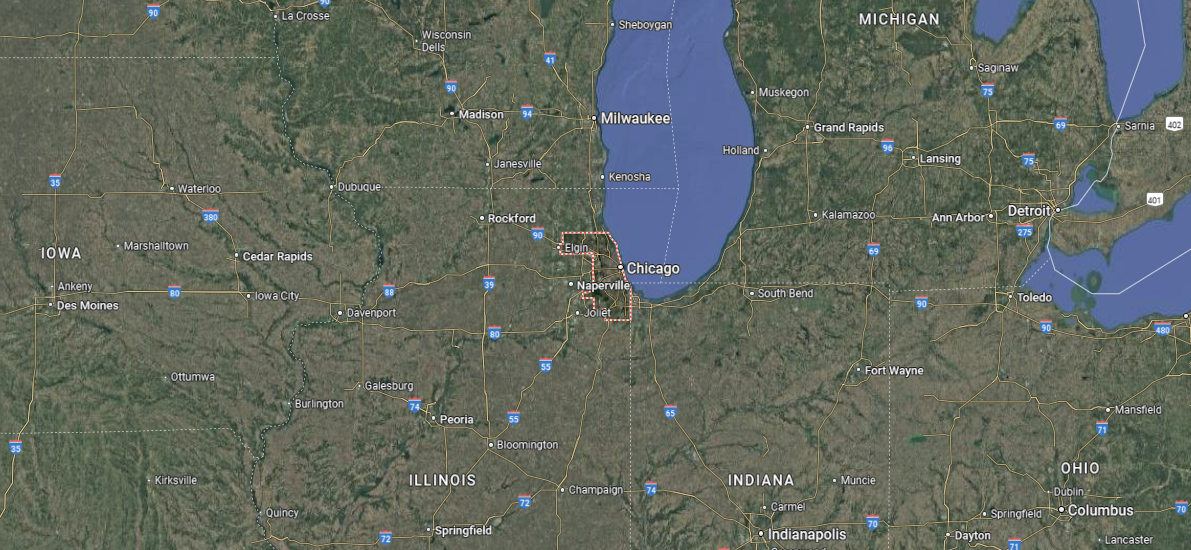
Cook County is in northeastern Illinois, stretching along the southwestern shore of Lake Michigan and encompassing Chicago as well as its surrounding suburbs. It’s about 300 miles northeast of St. Louis and reached by an extensive network of interstates—90, 94, 290, and 55—that converge toward the city before branching into neighborhood streets.
Approaching from the west or south, the skyline rises above miles of urban neighborhoods, parks, and industrial corridors. It’s the busiest, most connected county in the state, yet even here, pockets of lakefront and forest preserve offer moments of stillness.
#5. Sangamon County, Illinois
– Overall Rank: 212
– Population: 196,122
– Median household income: $71,653
– Median home value: $162,400 (70% own)
– Median rent: $927 (30% rent)
– Top public schools: Rochester High School (grade A), Springfield High School (grade A), Glenwood High School (grade A minus)
– Top private schools: Sacred Heart Griffin High School (grade A), Lutheran High School (grade B), Calvary Academy (grade B minus)
– Top places: Leland Grove (grade A+), Chatham (grade A), Sherman (grade A)
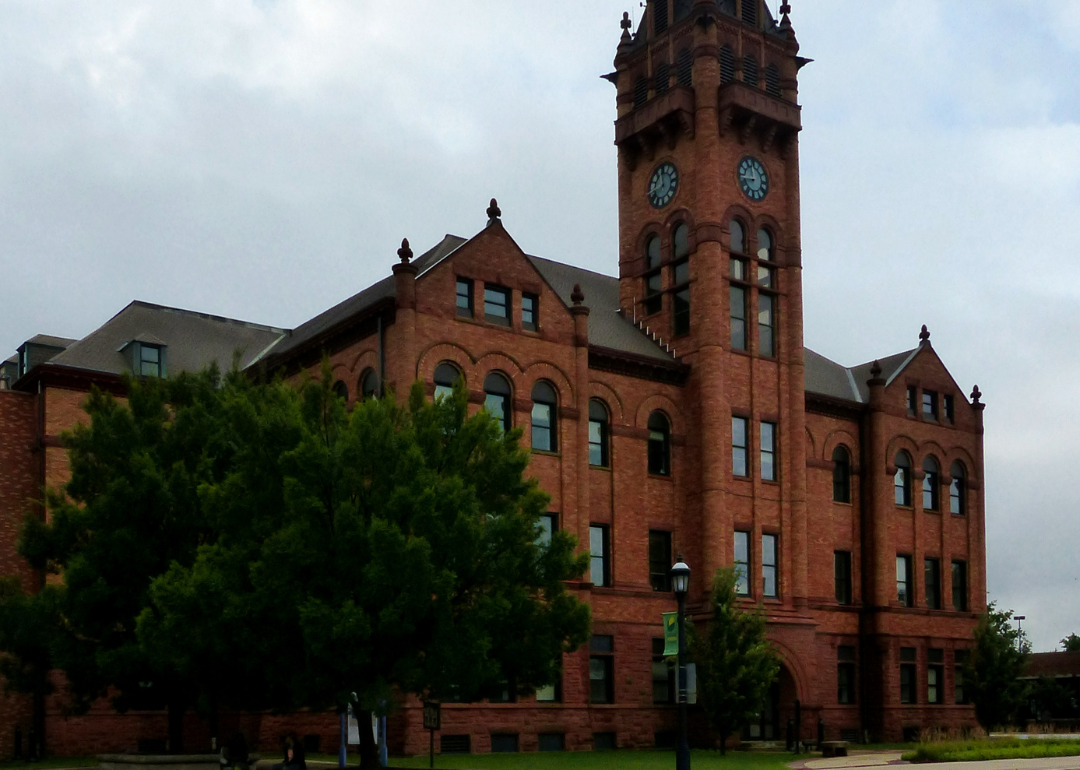
About
Sangamon County blends the energy of a state capital with the comfort of Midwestern living. Springfield, the county seat, serves as both a historic treasure and an economic hub, with government, healthcare, education, insurance, and manufacturing providing steady employment.
Neighborhoods range from tree-lined historic districts to modern suburban developments, all within a housing market that remains affordable compared to many metro areas.
Life here offers more than just work opportunities. Residents enjoy well-regarded schools, a strong network of parks, and year-round events that celebrate local heritage—especially the legacy of Abraham Lincoln.
Lake Springfield offers boating and fishing, while museums, theaters, and festivals keep the calendar full. With its stable economy, rich history, and welcoming communities, Sangamon County offers a setting where tradition and progress comfortably meet.
Where is Sangamon County, Illinois?
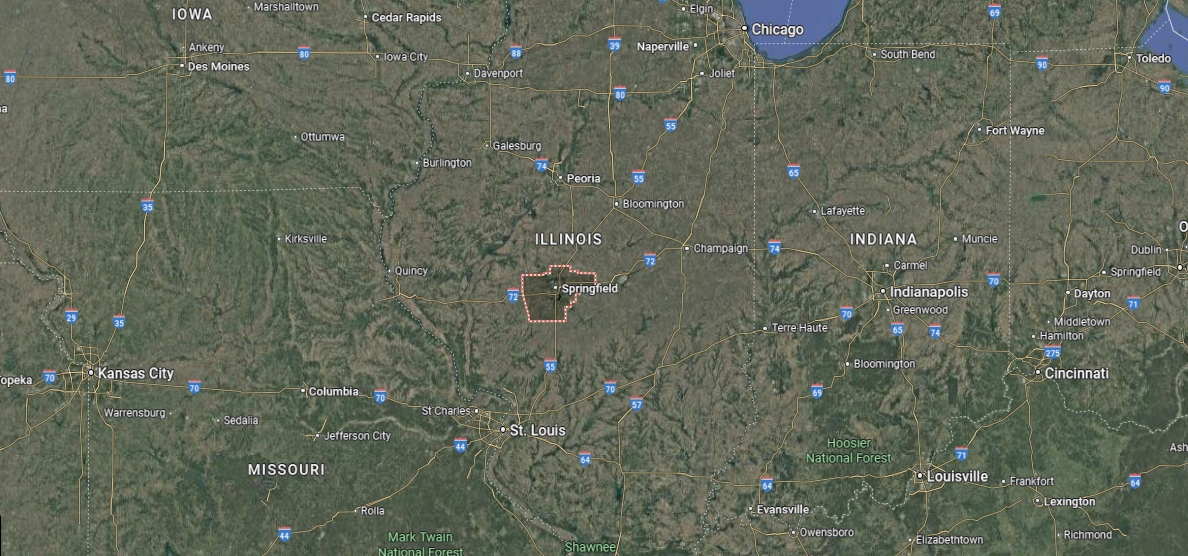
Sangamon County lies in central Illinois, anchored by the state capital of Springfield near its center. It’s about 200 miles southwest of Chicago and reached by Interstates 55 and 72, with the drive passing through flat farmland dotted with small towns.
Approaching from any direction, the roads lead toward the city’s historic core, framed by government buildings and tree-lined neighborhoods. It’s a place where the open prairie meets the steady hum of civic life.
#4. Champaign County, Illinois
– Overall Rank: 96
– Population: 206,525
– Median household income: $61,090
– Median home value: $192,600 (54% own)
– Median rent: $977 (46% rent)
– Top public schools: Mahomet-Seymour High School (grade A), St. Joseph Middle School (grade A), St. Joseph Elementary School (grade A)
– Top private schools: Academy High (grade A+), The High School of Saint Thomas More (grade A), Judah Christian School (grade A minus)
– Top places: Savoy (grade A+), Champaign (grade A), Mahomet (grade A)

About
In the heart of east-central Illinois, Champaign County blends the energy of a Big Ten university with the warmth of small-town living. Champaign and Urbana anchor the area as home to the University of Illinois, a major driver of the local economy alongside healthcare, technology, manufacturing, and agriculture.
Affordable housing, strong public schools, and an educated workforce create a foundation for both stability and growth. Life here is rich with options—stroll through vibrant downtown districts filled with restaurants, music venues, and art galleries, or explore the nearby parks, trails, and open countryside.
The university adds year-round cultural events, sports, and research-driven innovation that shape the community. With its mix of economic opportunity, educational excellence, and a lively cultural scene, Champaign County offers a place where work, learning, and leisure naturally connect.
Where is Champaign County, Illinois?
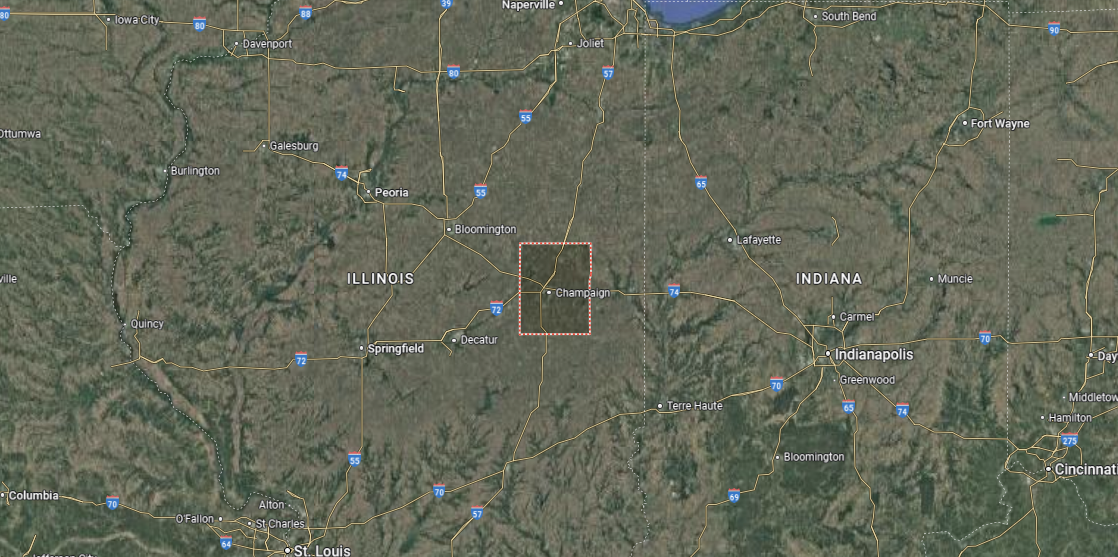
Champaign County sits in east-central Illinois, where broad stretches of prairie surround the twin cities of Champaign and Urbana. It’s about 135 miles south of Chicago and reached by Interstates 57, 72, and 74, with the drive carrying you past flat farmland broken only by small towns and grain elevators.
Approaching from the west or north, the horizon stays wide until the skyline of the university and city gradually emerges. It’s a place where open fields meet an energetic hub of education and community life.
#3. McLean County, Illinois
– Overall Rank: 73
– Population: 171,284
– Median household income: $75,356
– Median home value: $191,300 (65% own)
– Median rent: $941 (35% rent)
– Top public schools: Thomas Metcalf School (grade A+), University High School (grade A), Tri-Valley Elementary School (grade A)
– Top private schools: Central Catholic High School (grade A minus), Cornerstone Christian Academy of McLean County (grade B+), Calvary Christian Academy (grade B minus)
– Top places: Normal (grade A), Bloomington (grade A), Downs (grade A)

About
McLean County sits in central Illinois with Bloomington-Normal at its heart, offering a blend of small-city convenience and rural space. The economy is anchored by State Farm Insurance, Illinois State University, Rivian Automotive, healthcare, and agriculture, creating a diverse and stable job market.
Housing remains affordable, with options from historic neighborhoods to new suburban developments. Strong schools, multiple colleges, and a variety of parks and trails make daily life both practical and enjoyable.
With steady growth, a balanced economy, and a location along major interstate corridors, McLean County appeals to families, professionals, and students looking for both opportunity and livability.
Where is McLean County, Illinois?
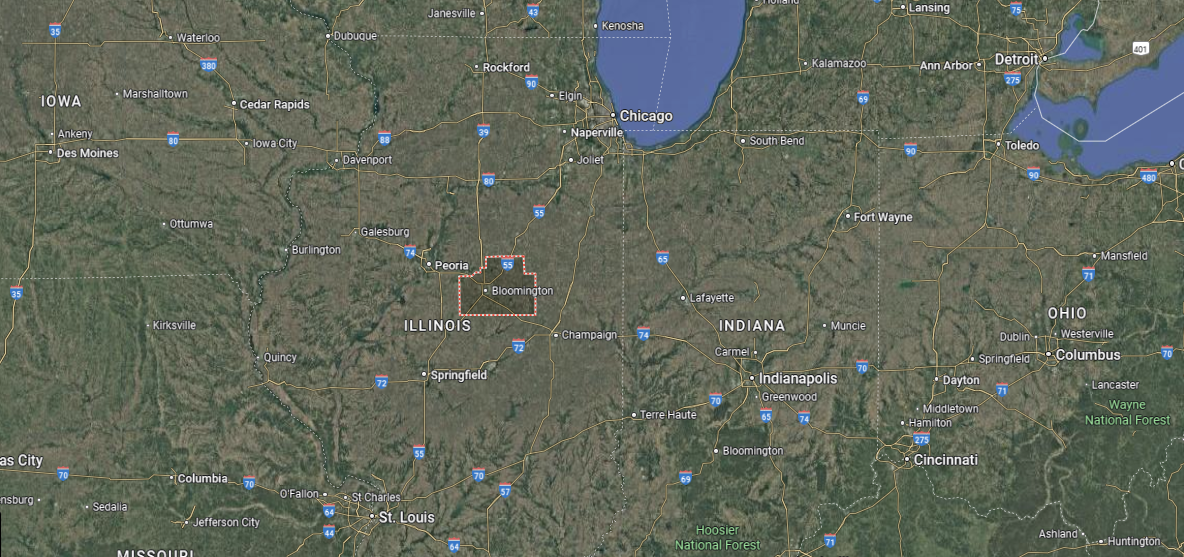
McLean County is in central Illinois, where vast stretches of farmland surround the city of Bloomington at its center. It’s about 135 miles southwest of Chicago and reached by Interstates 55, 39, and 74, with the drive passing through open prairie and small farming communities.
From nearly any approach, the land feels wide and unbroken until the city rises from the fields. It’s a place where the horizon seems endless, yet the roads lead straight to a well-connected hub.
#2. Lake County, Illinois
– Overall Rank: 37
– Population: 713,159
– Median household income: $104,553
– Median home value: $313,700 (74% own)
– Median rent: $1,382 (26% rent)
– Top public schools: Adlai E. Stevenson High School (grade A+), Vernon Hills High School (grade A+), Barrington High School (grade A+)
– Top private schools: Lake Forest Academy (grade A+), Woodlands Academy of the Sacred Heart (grade A+), Carmel Catholic High School (grade A)
– Top places: Long Grove (grade A+), Buffalo Grove (grade A+), Vernon Hills (grade A+)
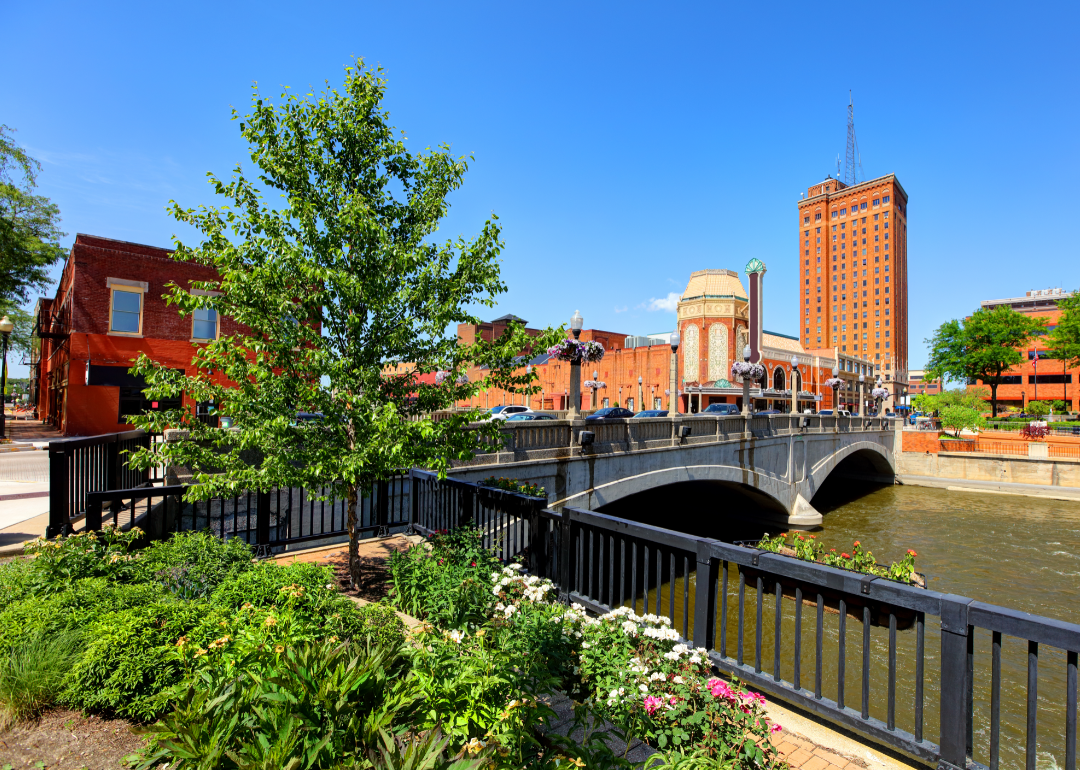
About
Along the shores of Lake Michigan in northeastern Illinois, Lake County blends scenic beauty, thriving communities, and quick access to Chicago and Milwaukee. Cities like Waukegan, Libertyville, and Lake Forest pair historic charm with modern amenities, while lakefront neighborhoods and resort towns showcase its natural appeal.
The economy is fueled by healthcare, manufacturing, retail, education, and corporate headquarters, offering diverse job opportunities. Residents benefit from strong schools, abundant parks, and year-round recreation—boating on Lake Michigan, hiking the Des Plaines River Trail, or exploring forest preserves.
Housing ranges from upscale estates to suburban neighborhoods and rural retreats, with a cost of living that matches its prime location. Lake County offers both opportunity and quality of life, making it a place where work, leisure, and community come together.
Where is Lake County, Illinois?
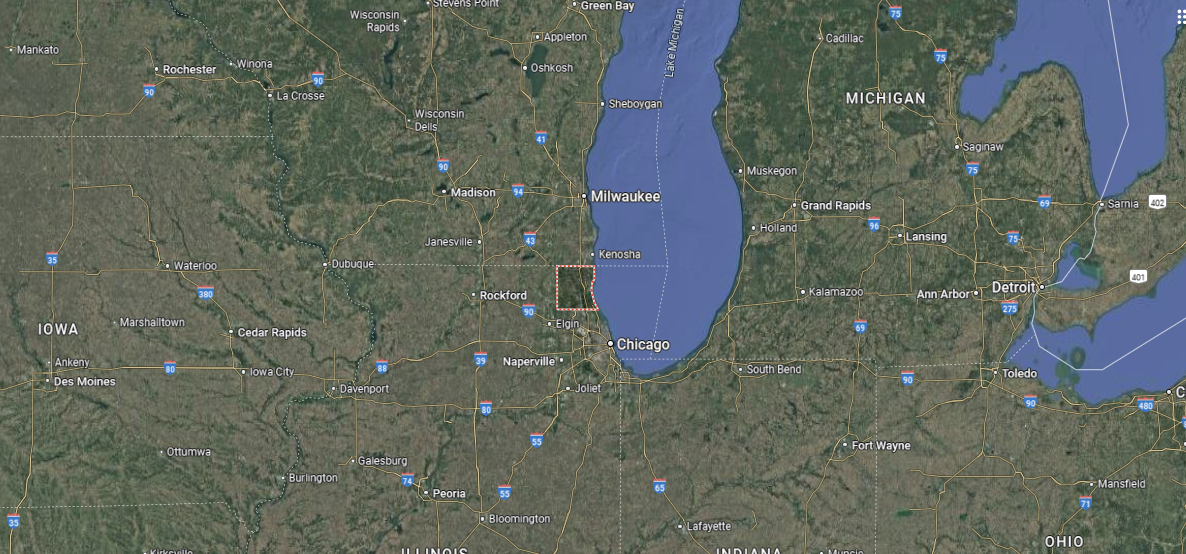
Lake County lies in the far northeastern corner of Illinois, bordered by Wisconsin to the north and Lake Michigan to the east. It’s about 40 miles north of downtown Chicago and reached by Interstate 94 or U.S. Route 41, with the drive moving through suburban towns, forest preserves, and stretches of lakefront.
Approaching from the west brings rolling countryside, while the eastern edge opens to wide views of the water. It’s close to the city yet shaped by open shoreline and green spaces that give it a calmer rhythm.
#1. DuPage County, Illinois
– Overall Rank: 11
– Population: 930,559
– Median household income: $107,035
– Median home value: $361,700 (73% own)
– Median rent: $1,551 (27% rent)
– Top public schools: Hinsdale Central High School (grade A+), Metea Valley High School (grade A+), Naperville North High School (grade A+)
– Top private schools: Naperville Christian Academy (grade A+), St. Francis High School (grade A+), Benet Academy (grade A)
– Top places: Naperville (grade A+), Clarendon Hills (grade A+), Hinsdale (grade A+)

Just west of Chicago, DuPage County combines polished suburban living with quick access to the city. Communities like Naperville, Wheaton, and Downers Grove offer vibrant downtowns, strong schools, and well-kept neighborhoods.
The economy is diverse, anchored by healthcare, education, technology, finance, and corporate headquarters, providing a broad range of career opportunities. Residents enjoy extensive park systems, forest preserves, and cultural venues—from local theaters to seasonal festivals—alongside excellent shopping and dining.
Housing options range from historic homes to modern developments, with values supported by the county’s strong reputation for safety and quality of life. DuPage County delivers a blend of convenience, opportunity, and community that continues to attract families and professionals.
Where is DuPage County, Illinois?
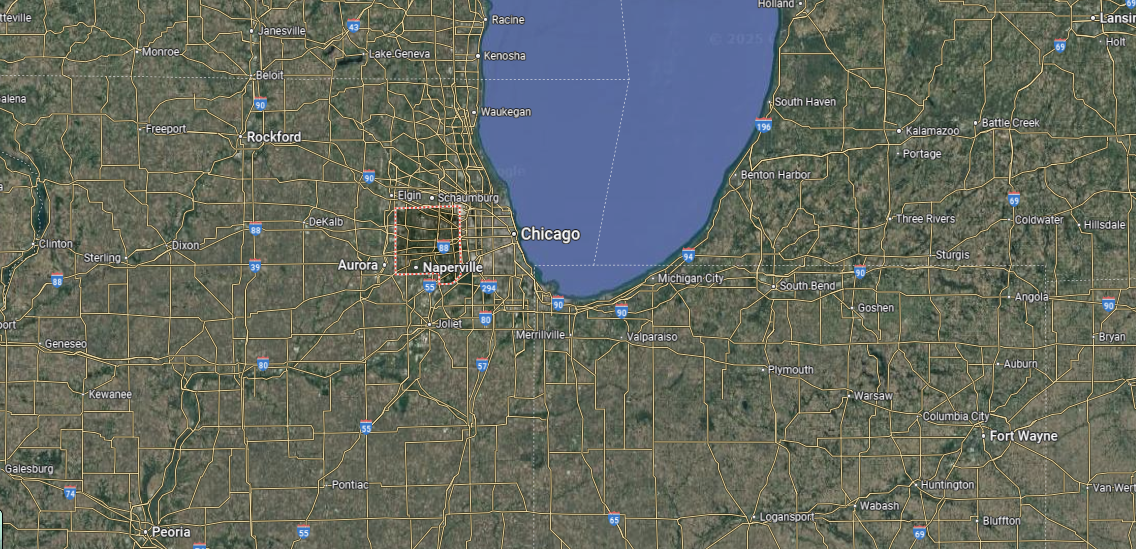
DuPage County is in northeastern Illinois, just west of Chicago, where suburban neighborhoods blend with forest preserves and winding waterways. It’s about 25 miles from downtown Chicago and reached by Interstates 88, 290, and 355, which connect its towns and parklands in all directions.
The approach moves quickly from city streets to tree-lined roads, open trails, and quiet residential areas. It’s close to the urban core yet holds enough green space to feel like a step away.
By Stacker





